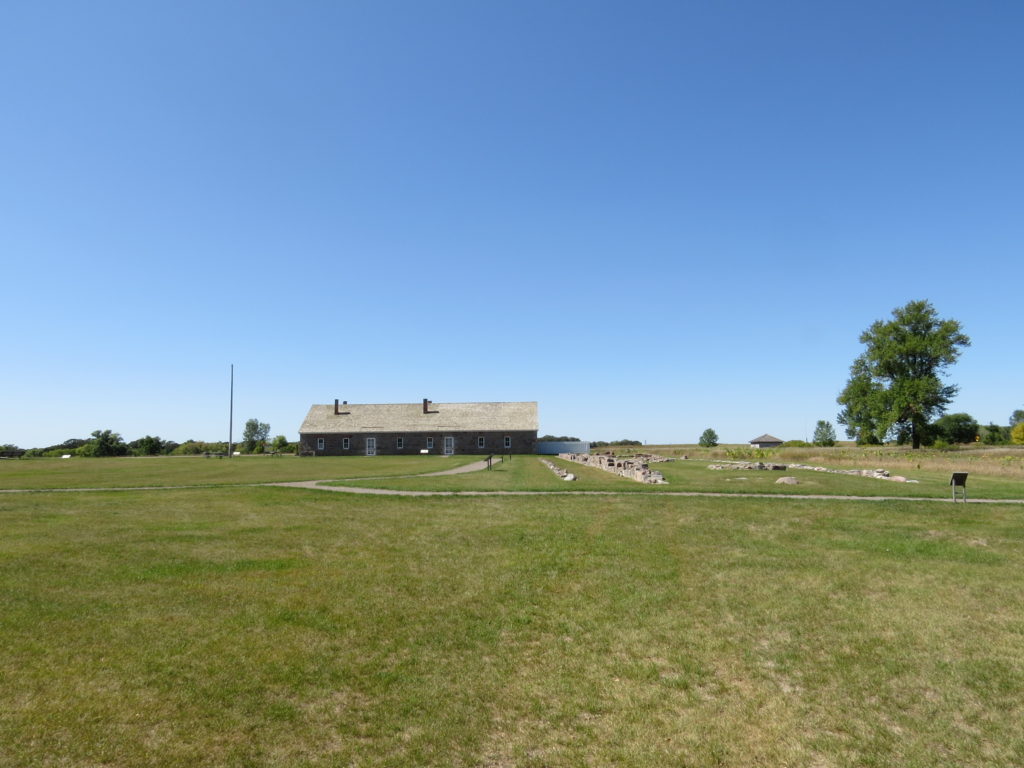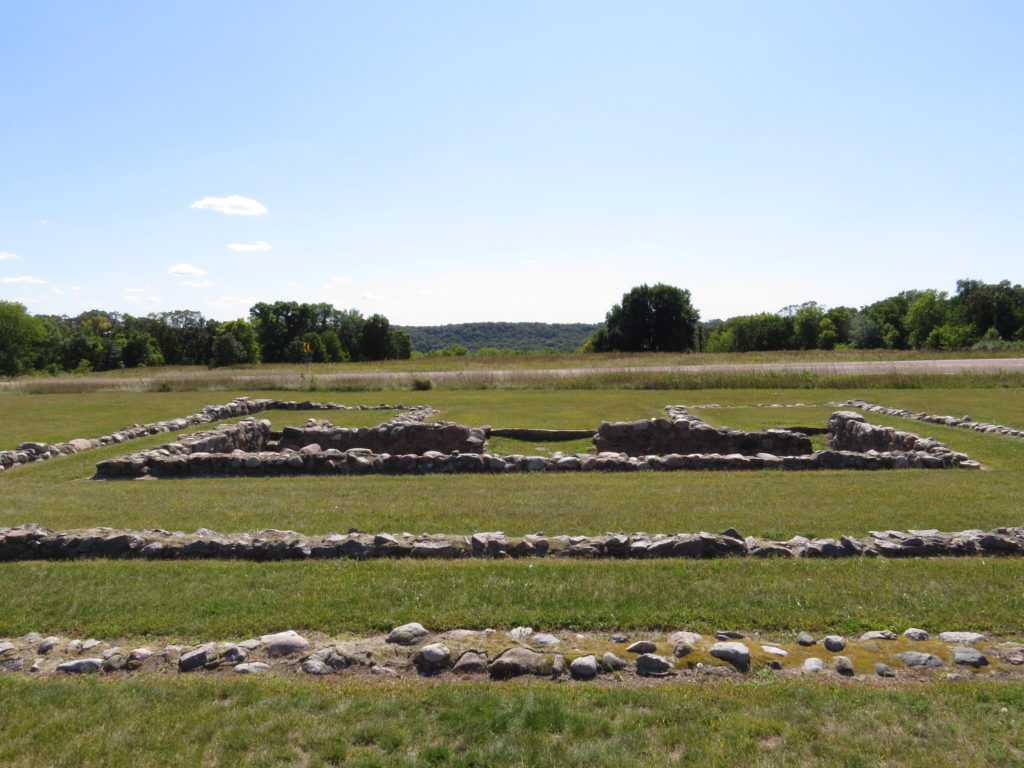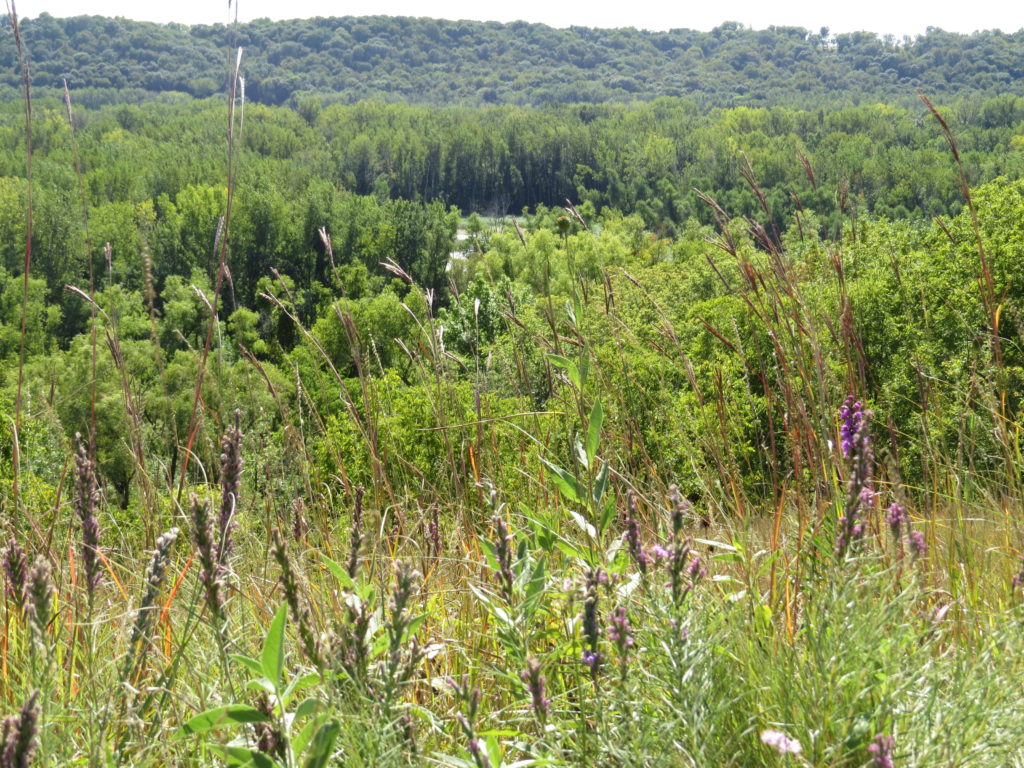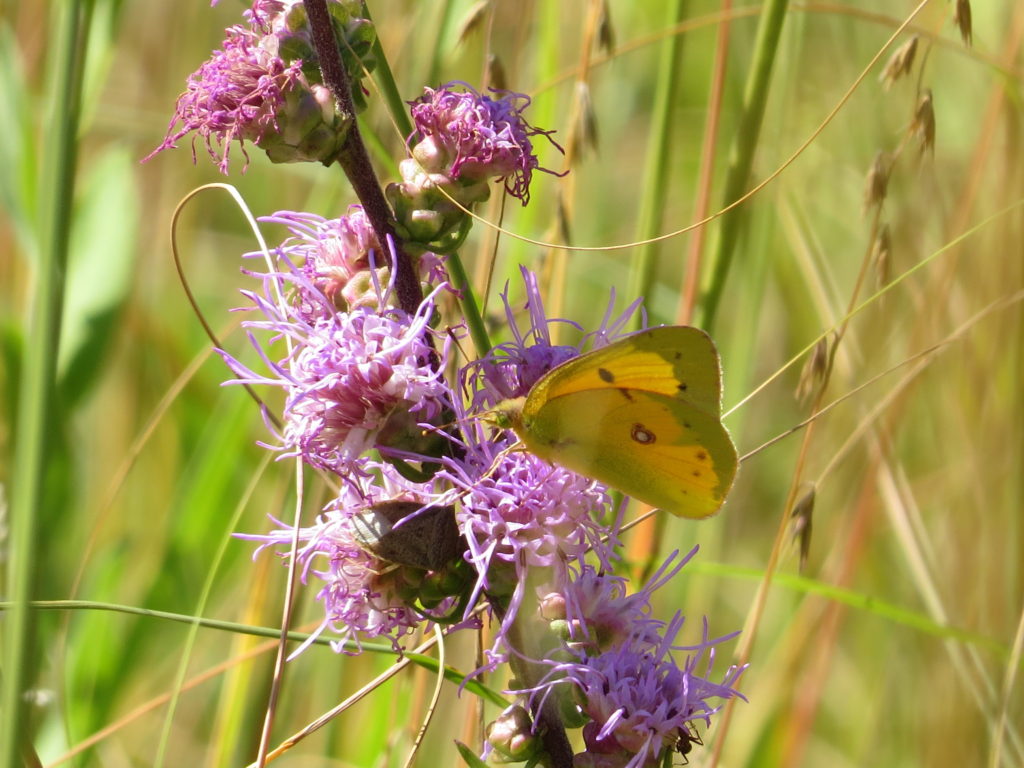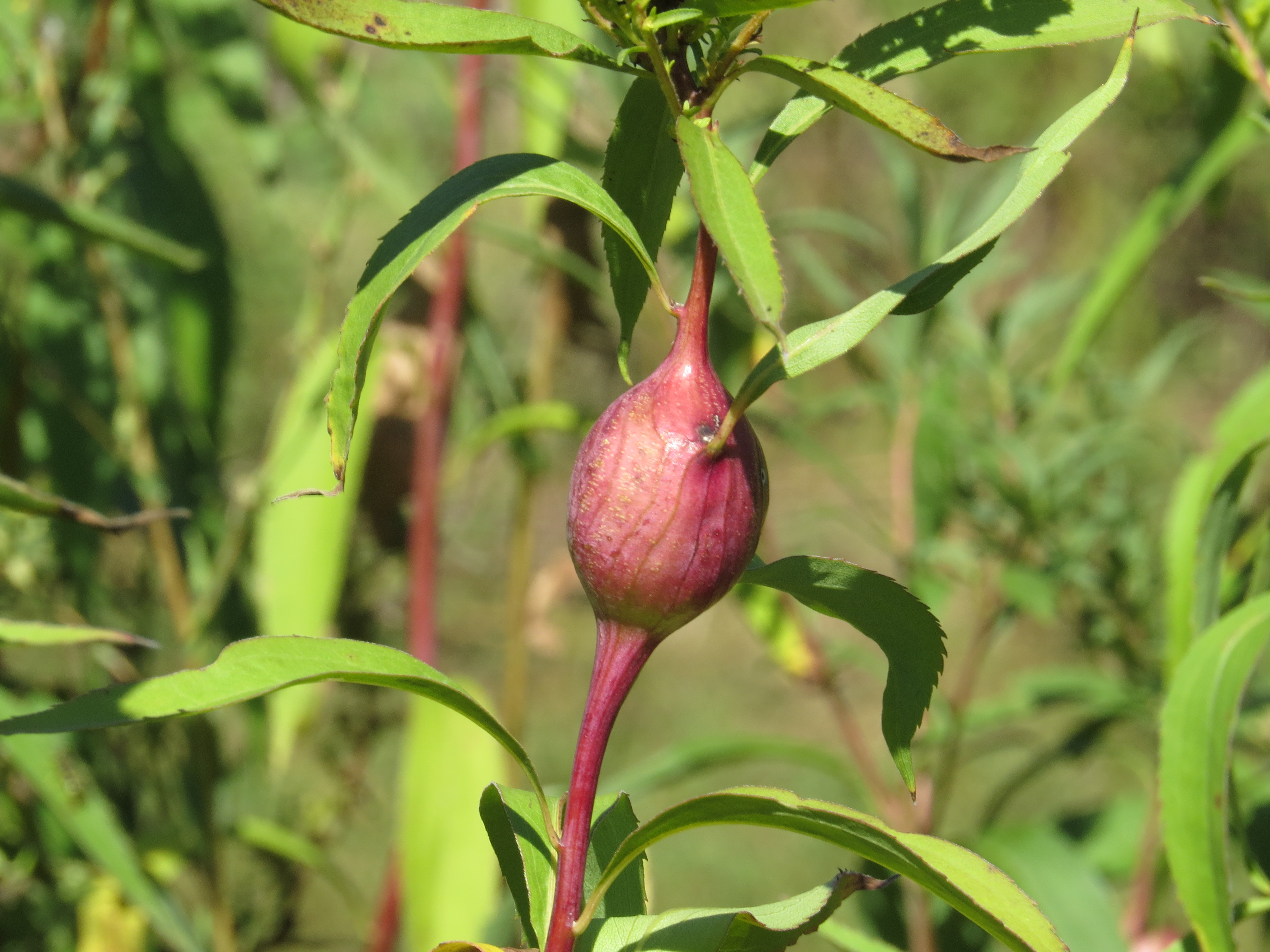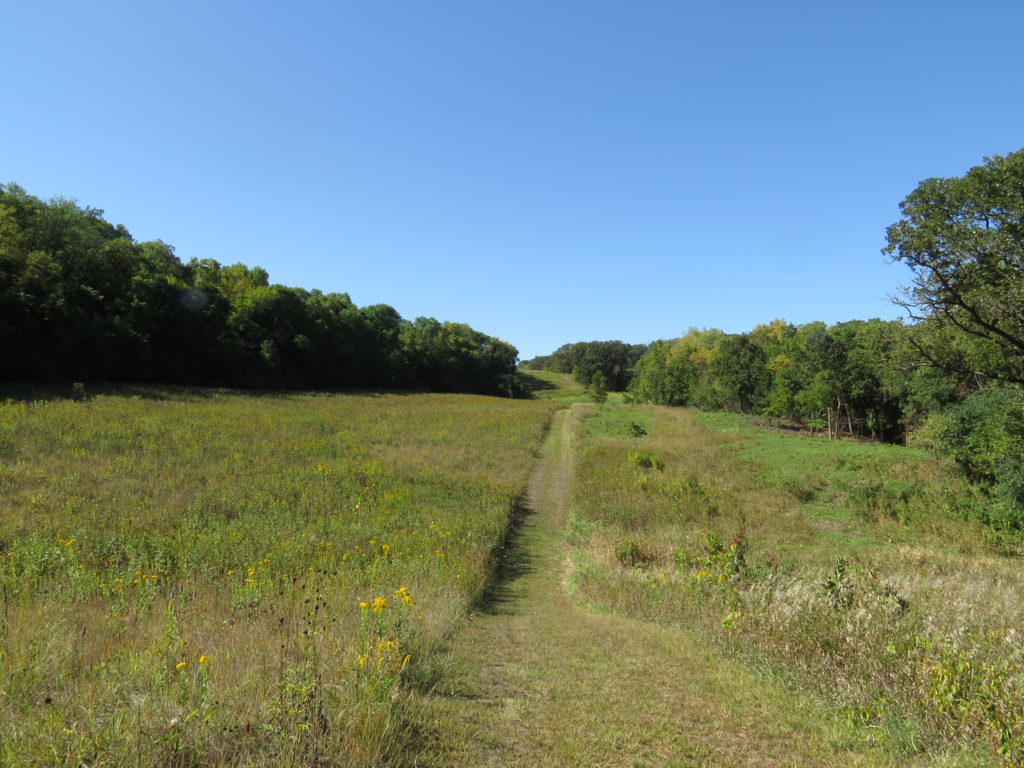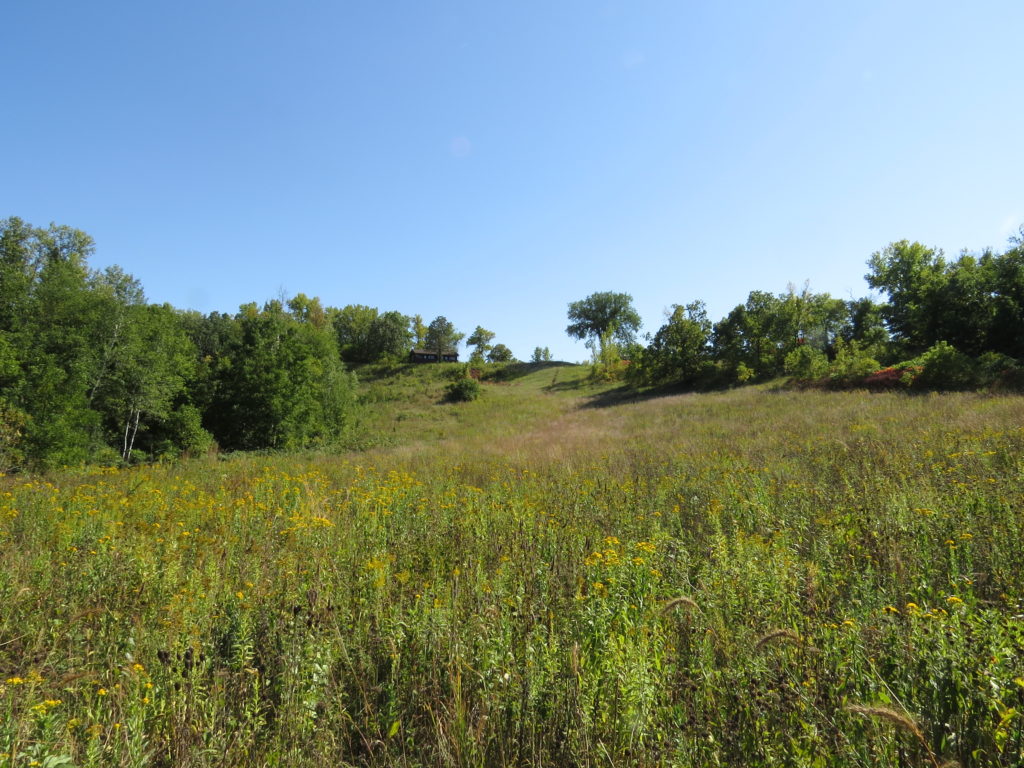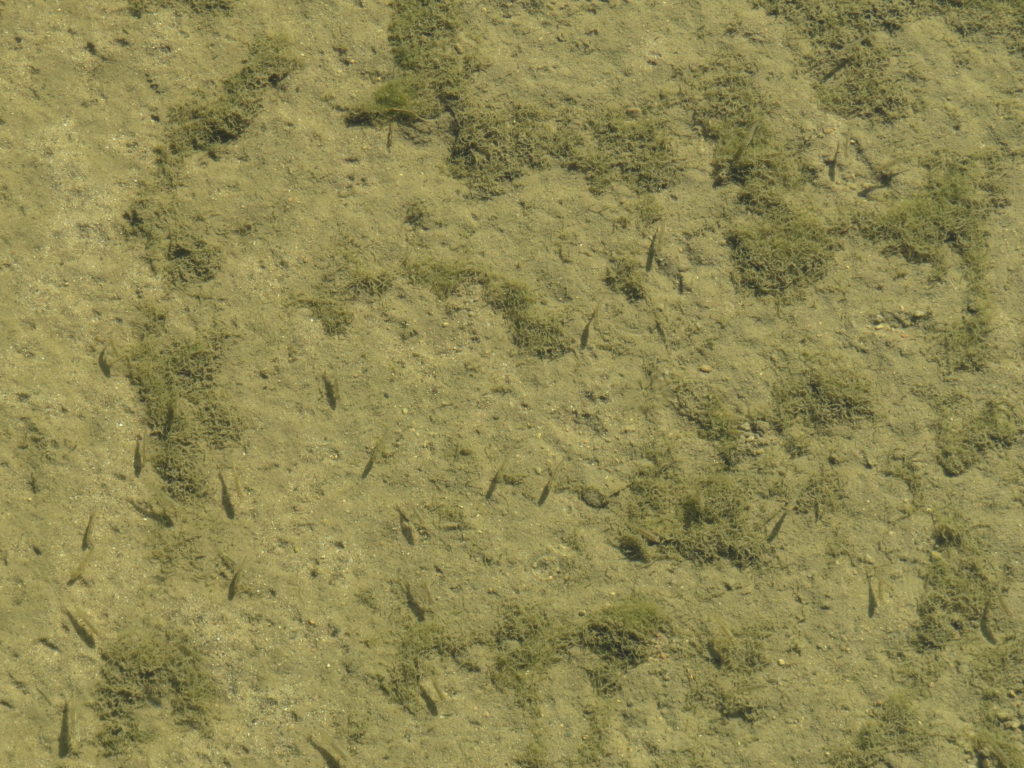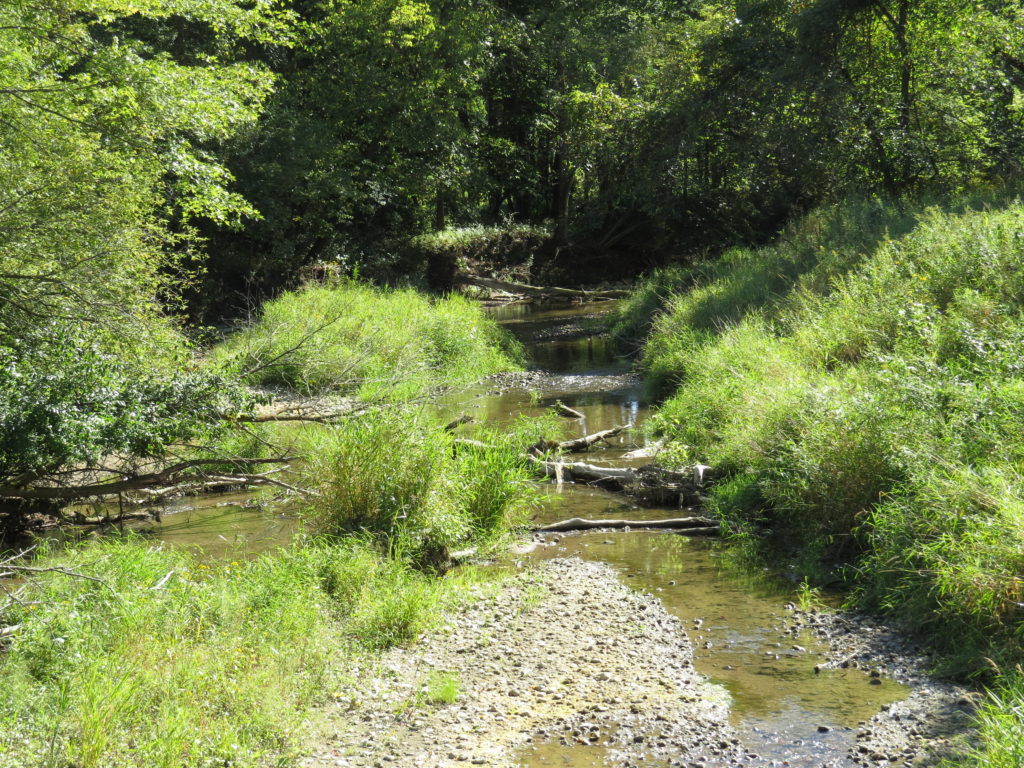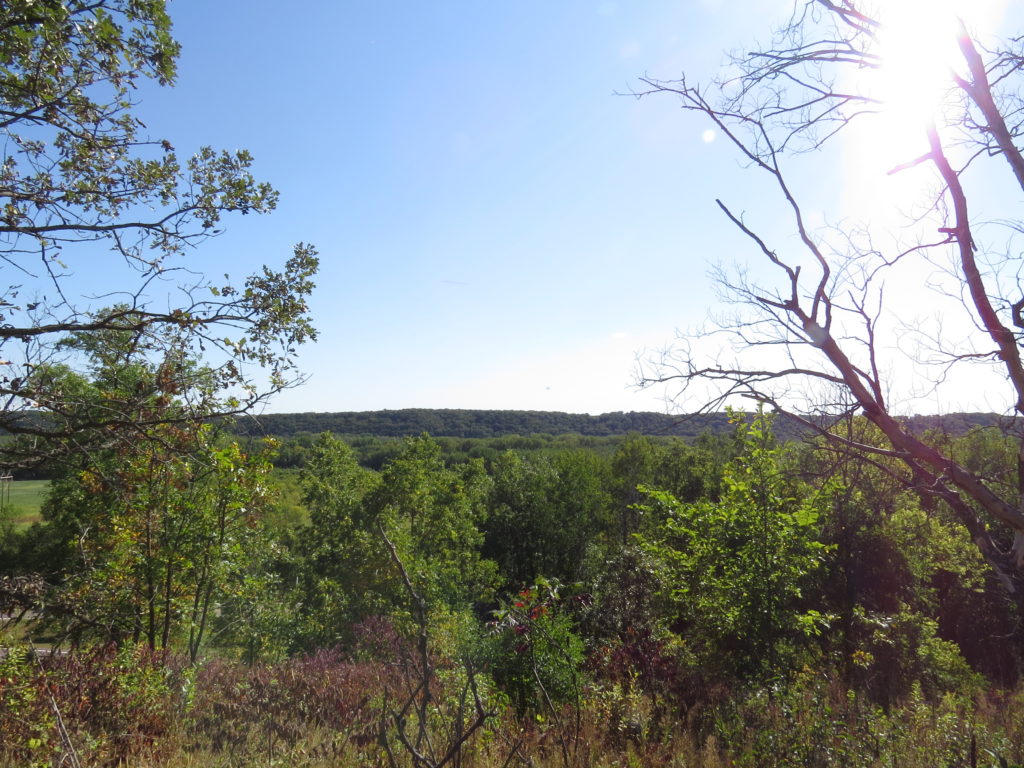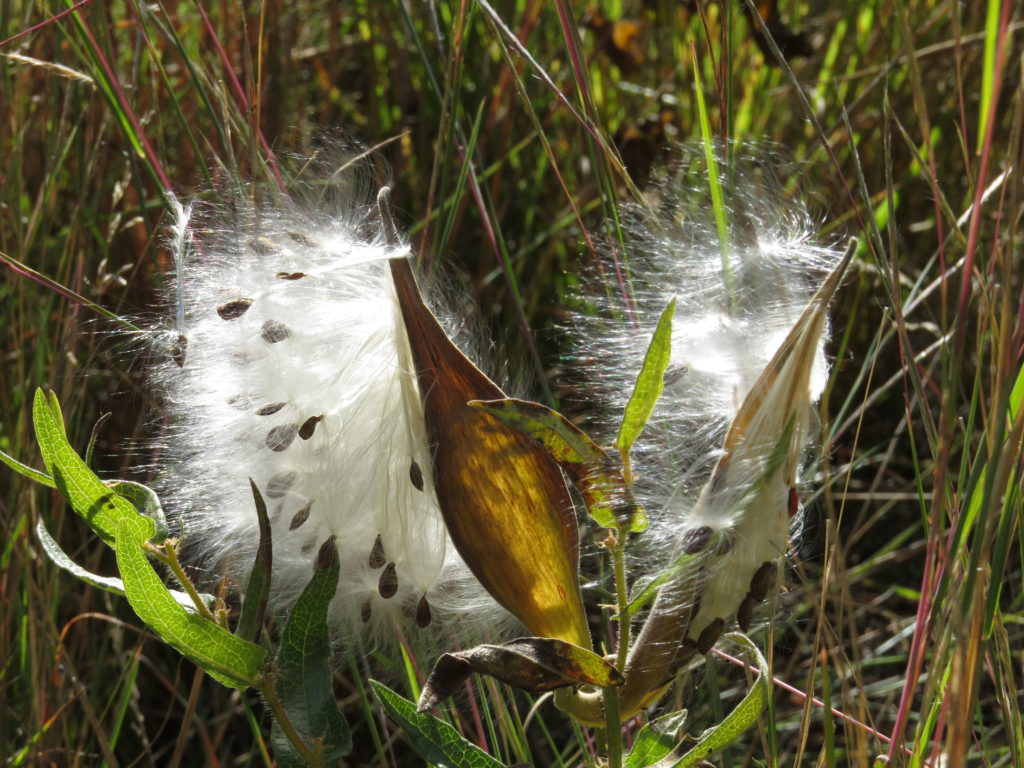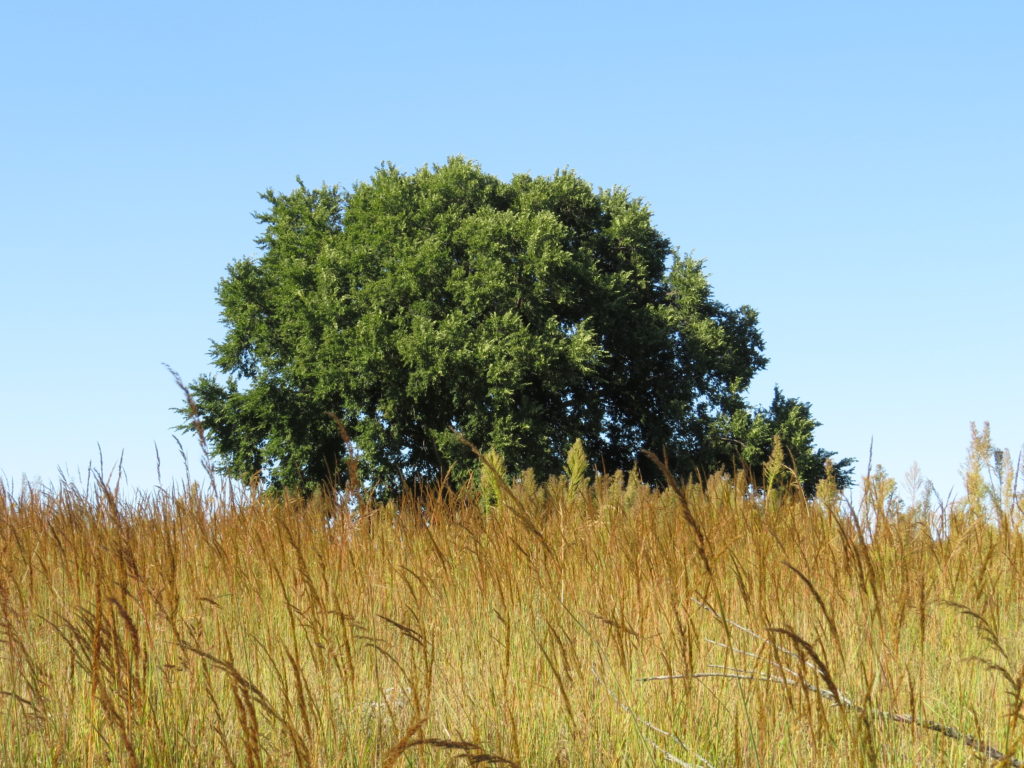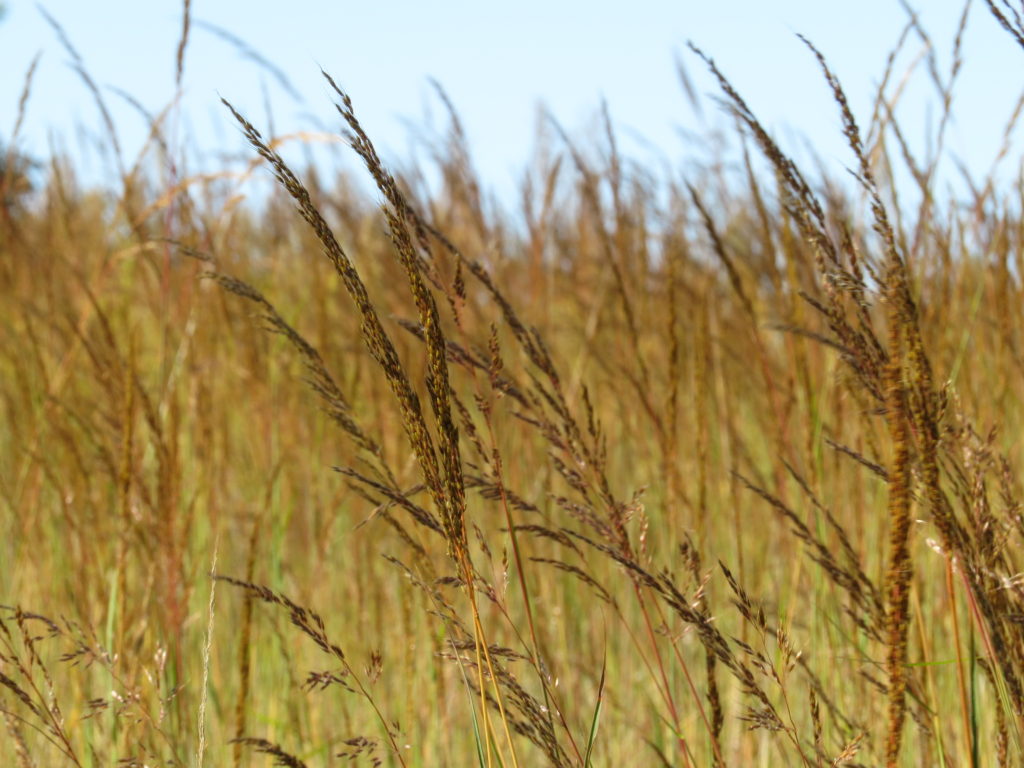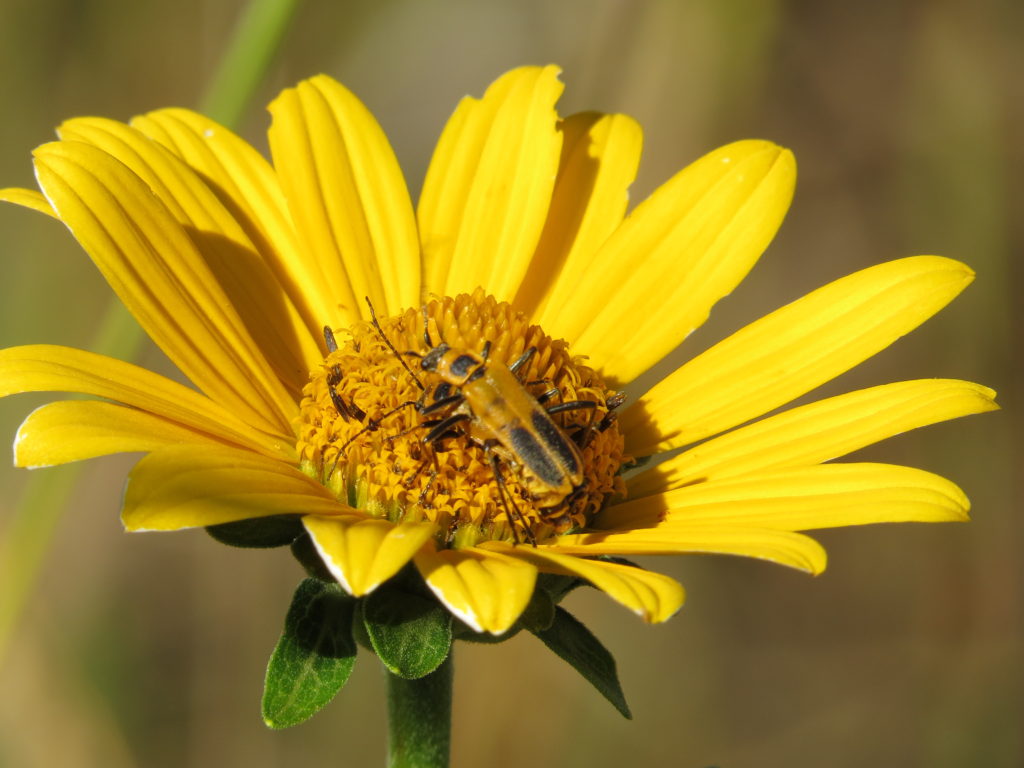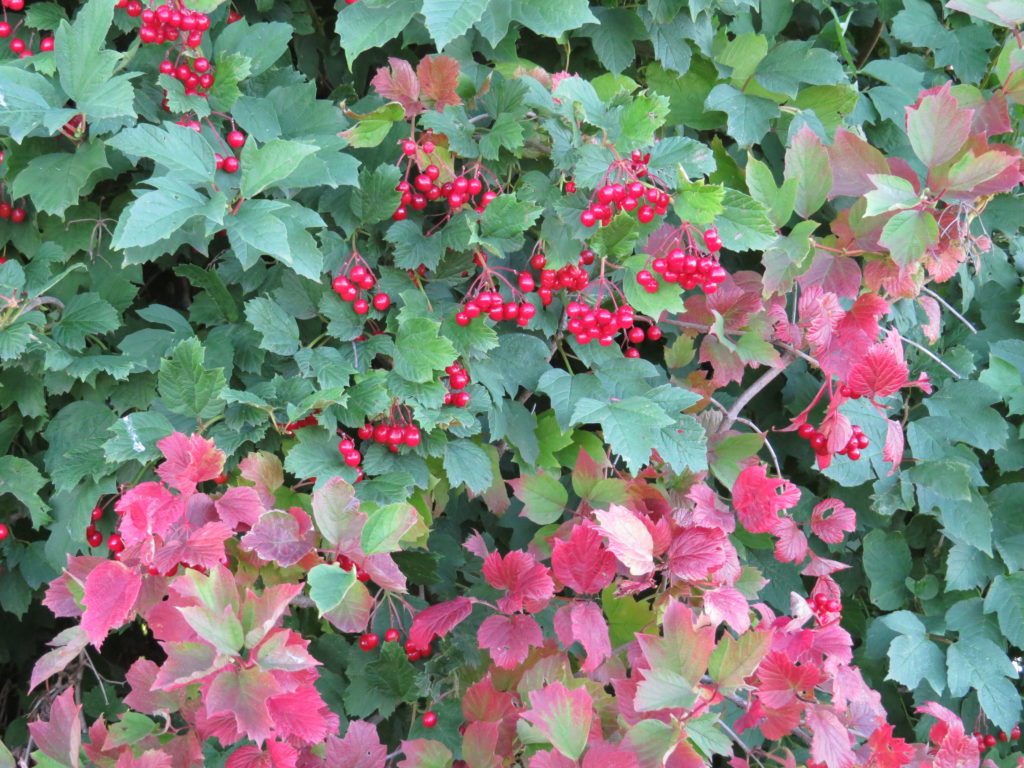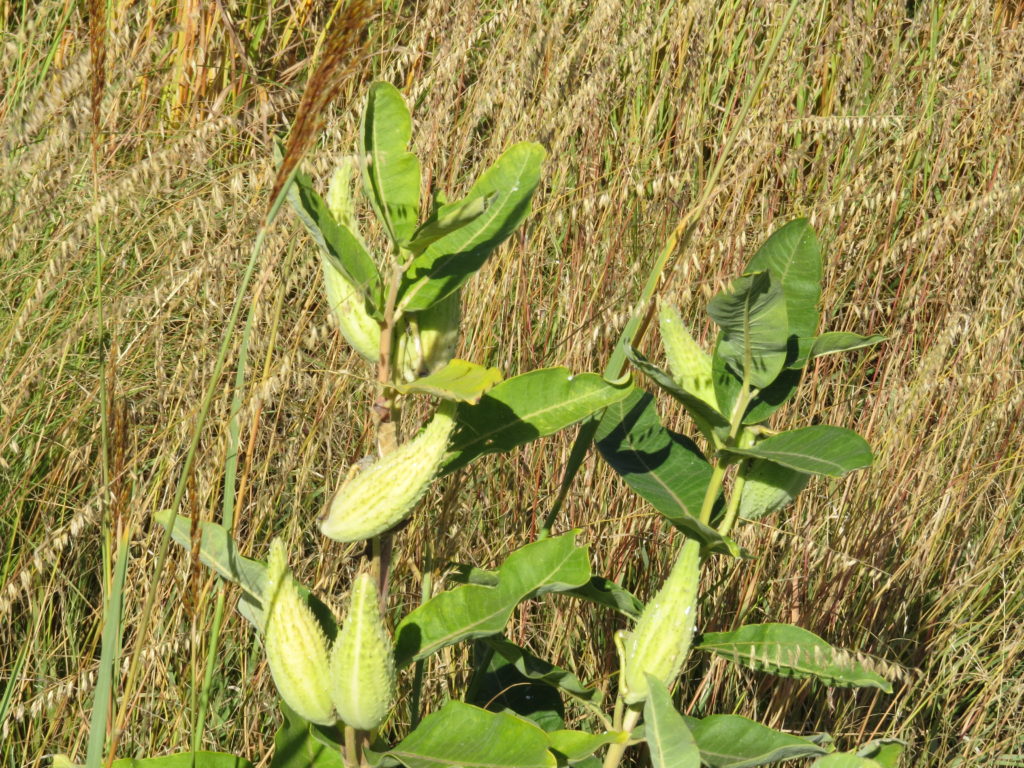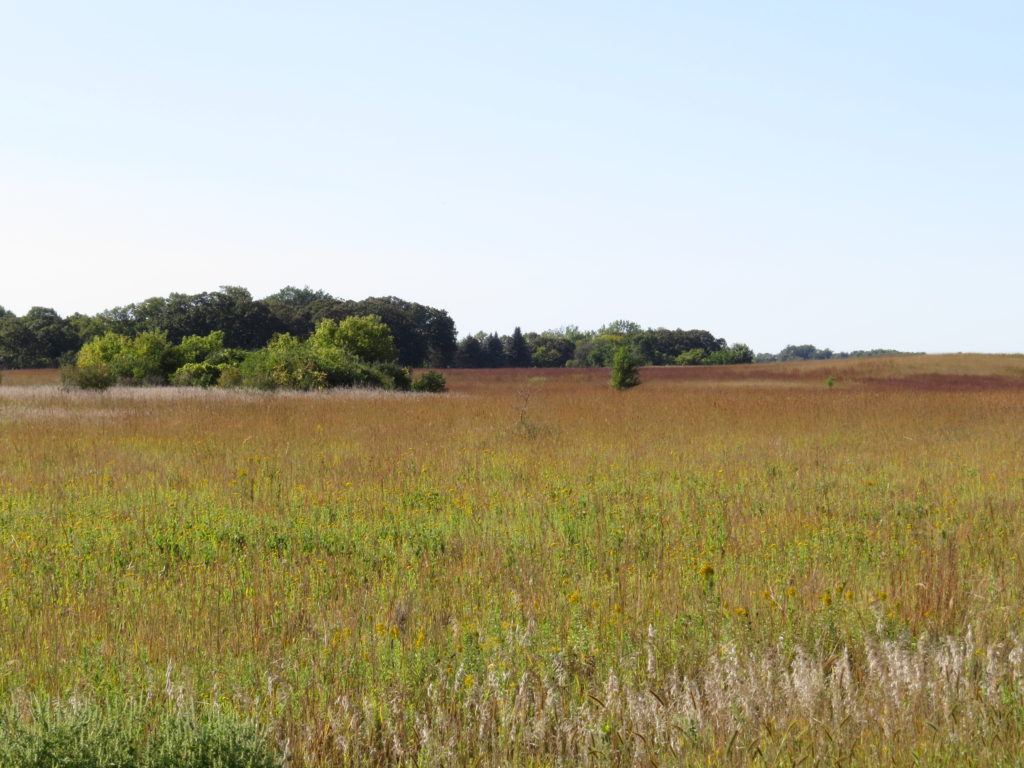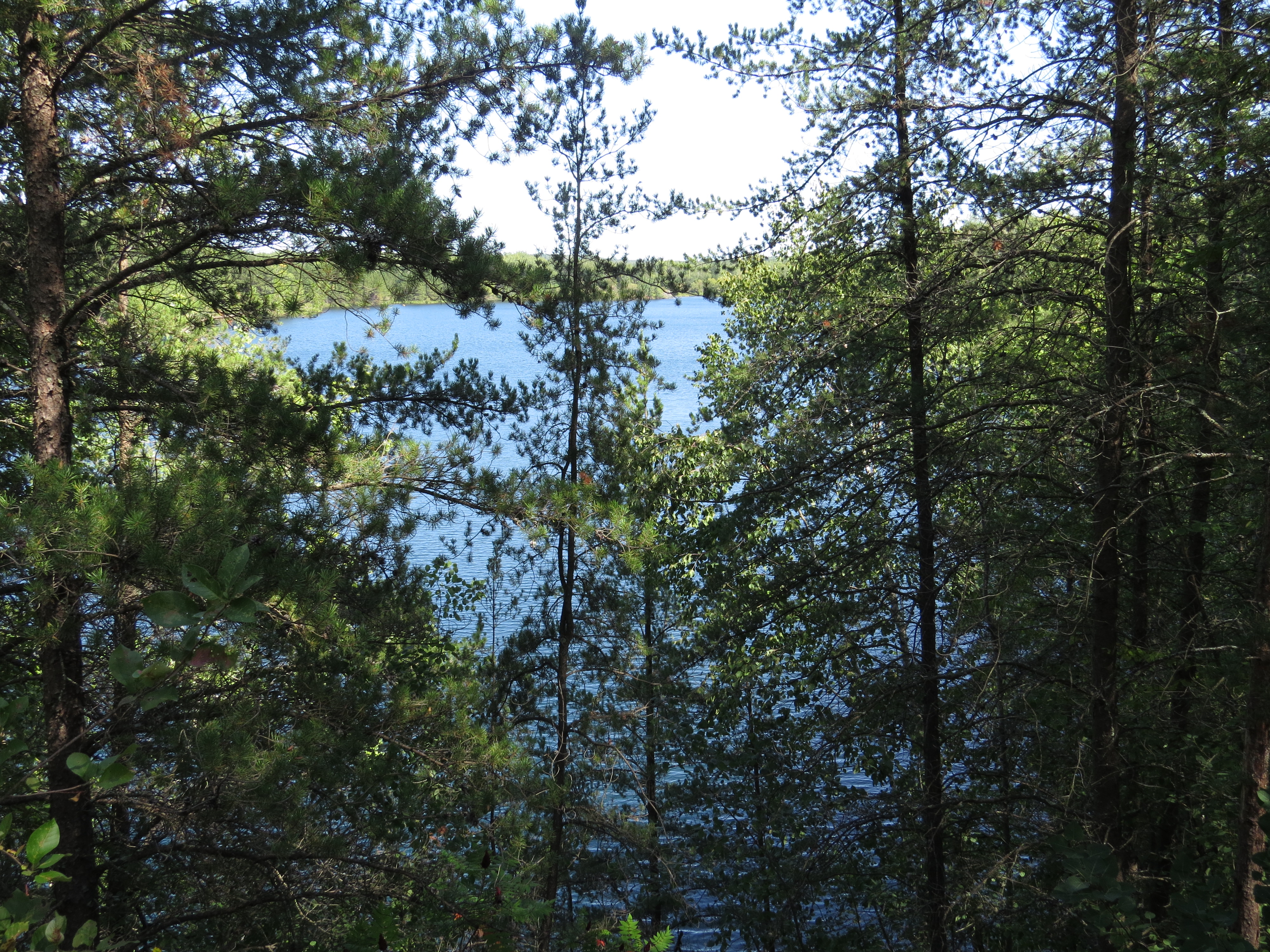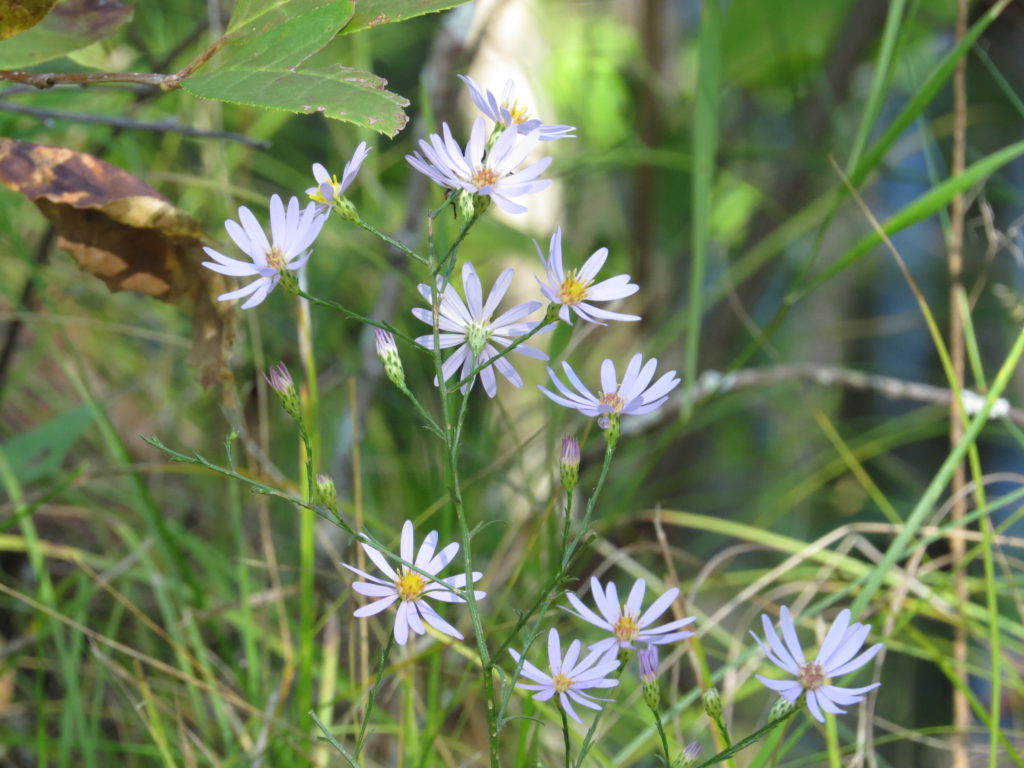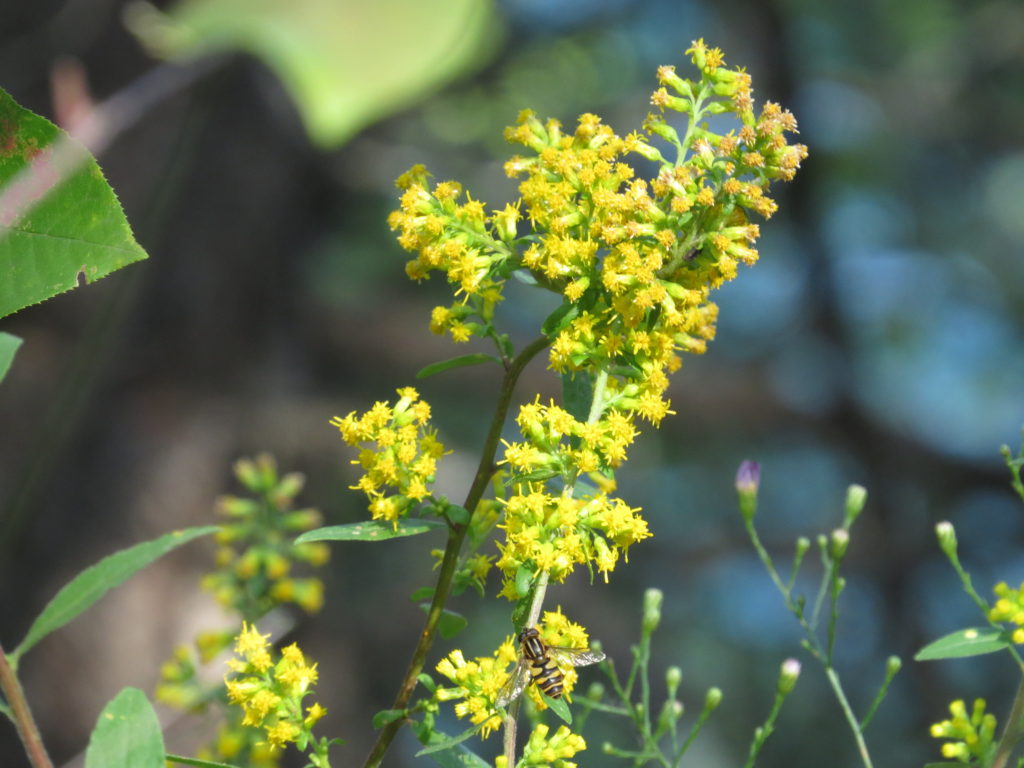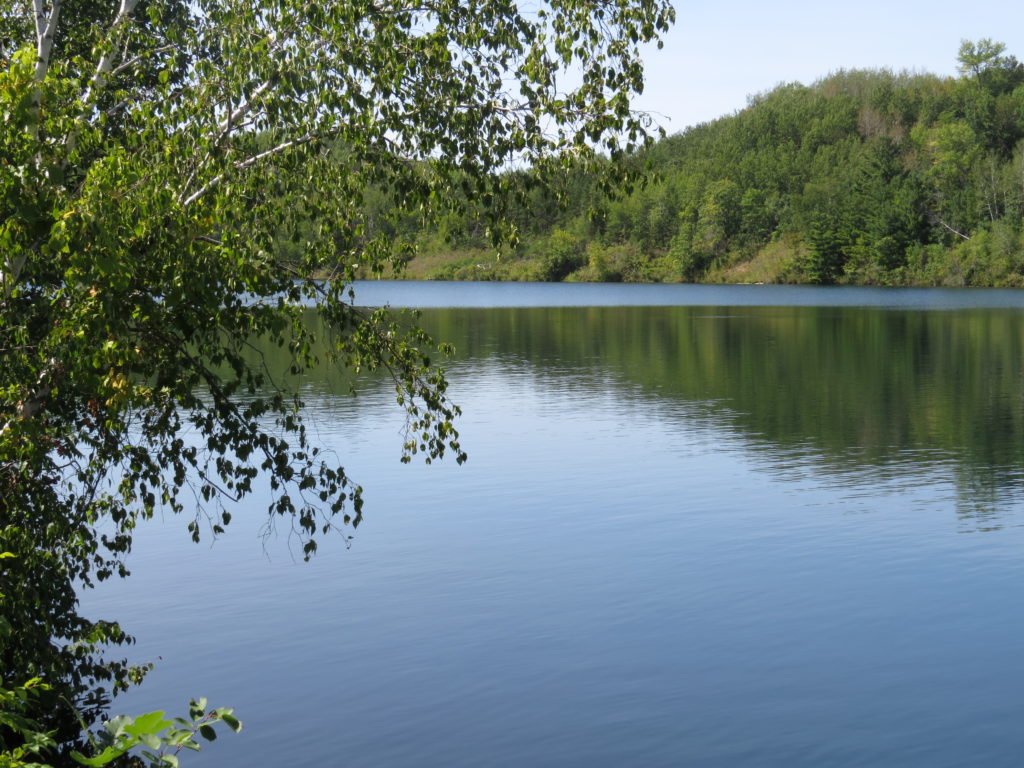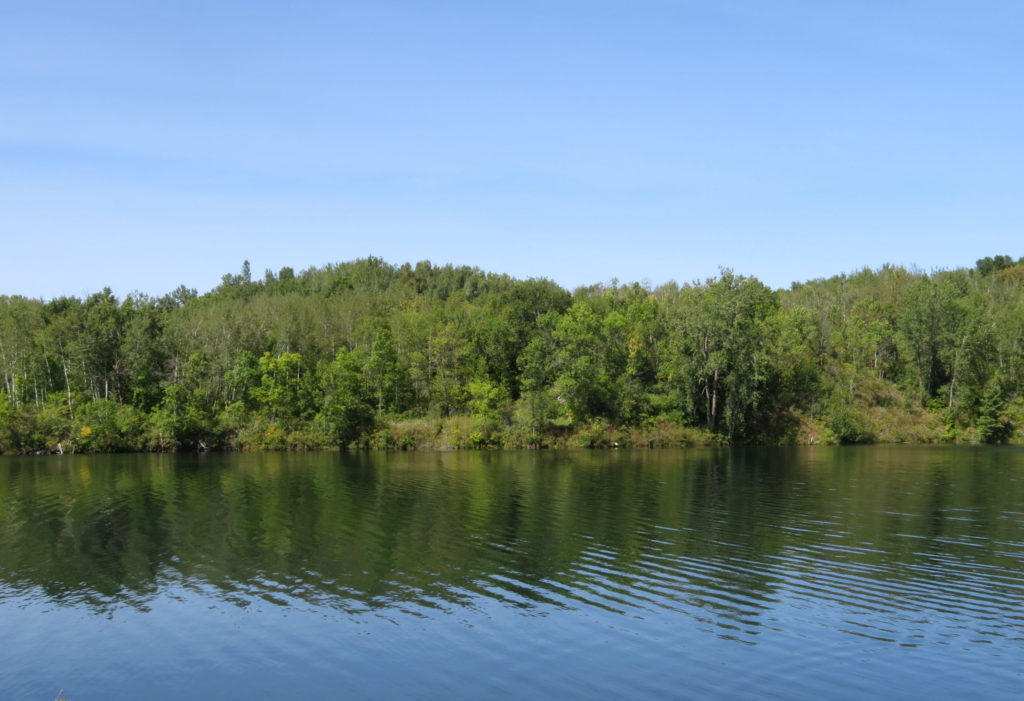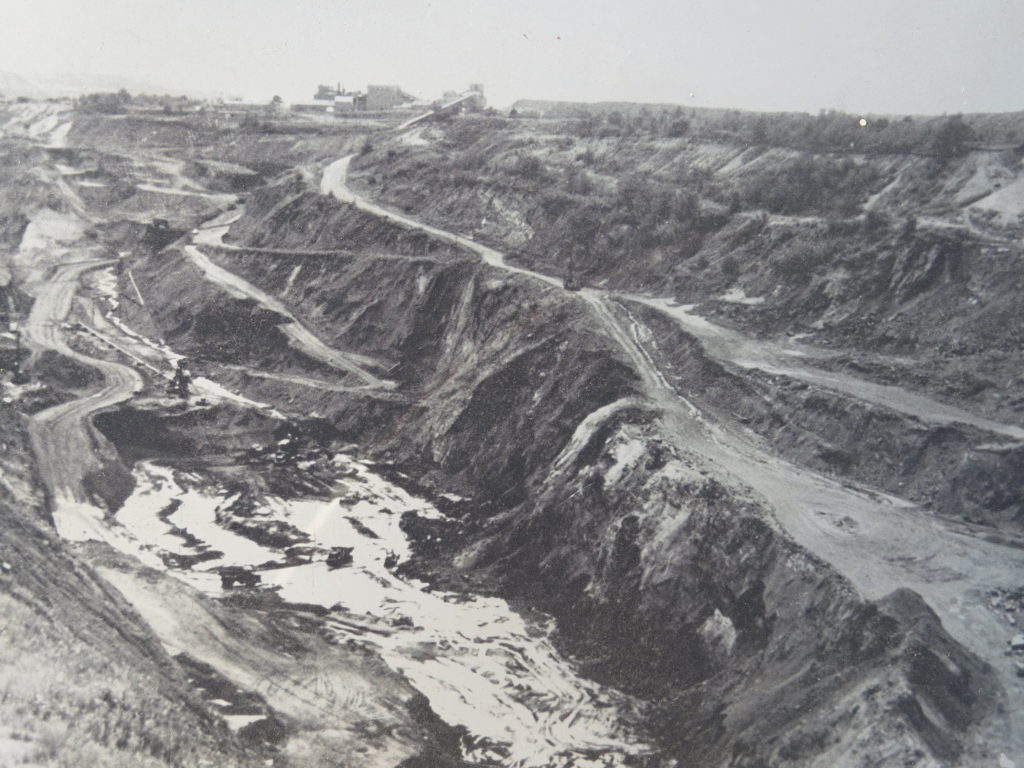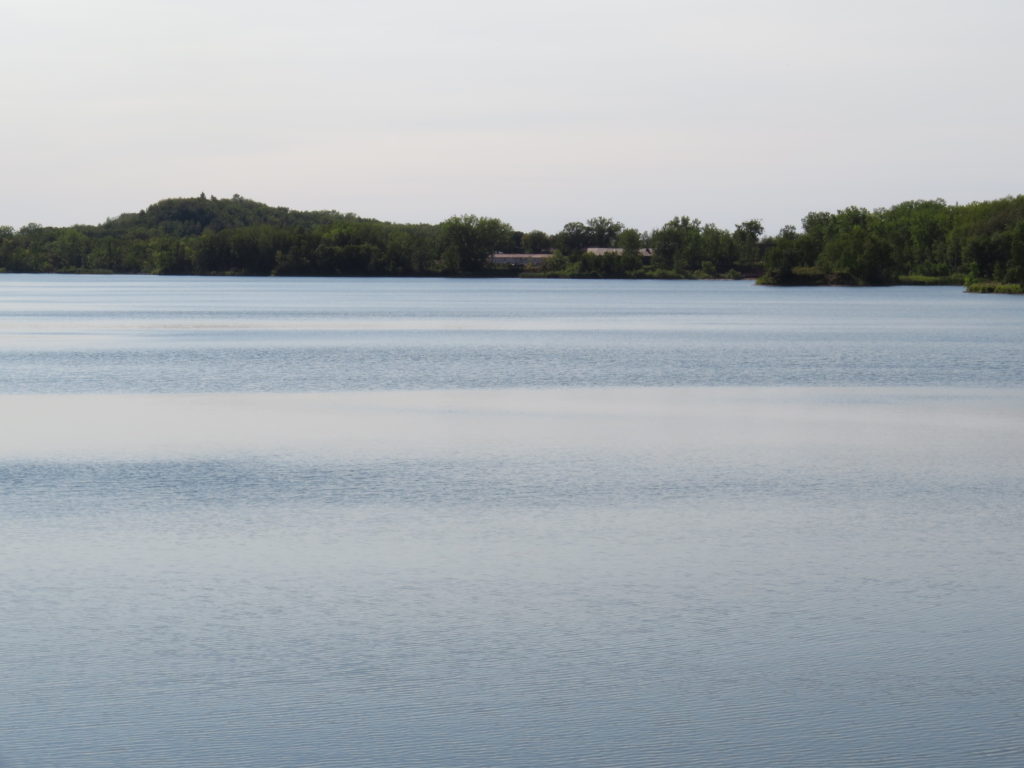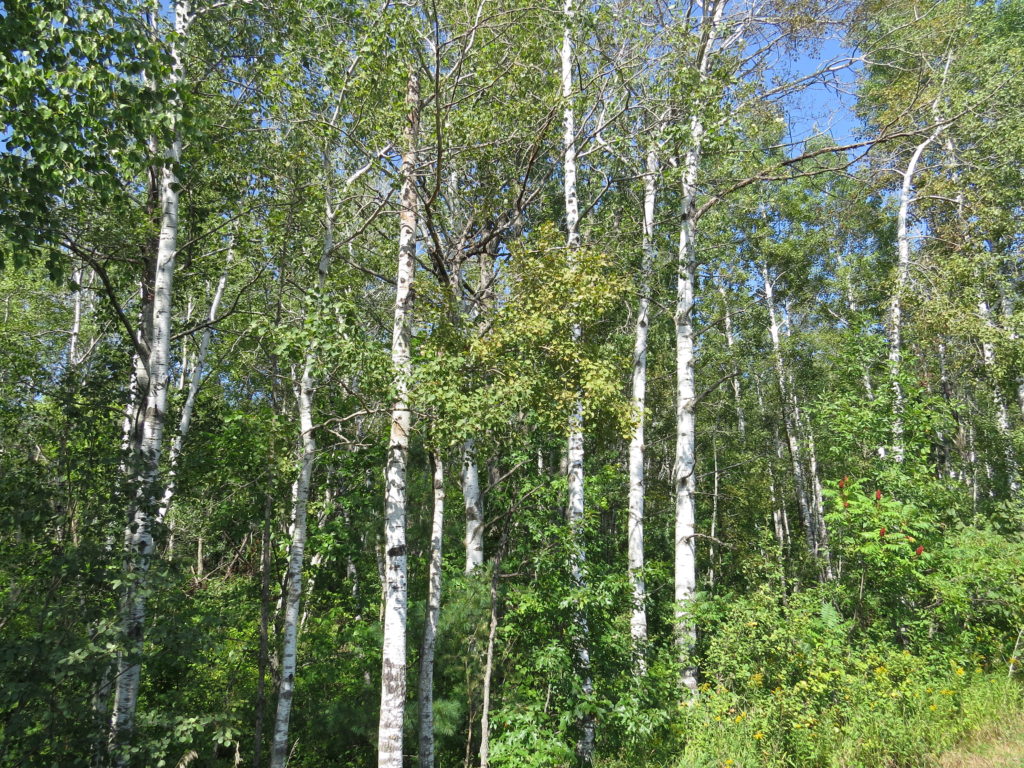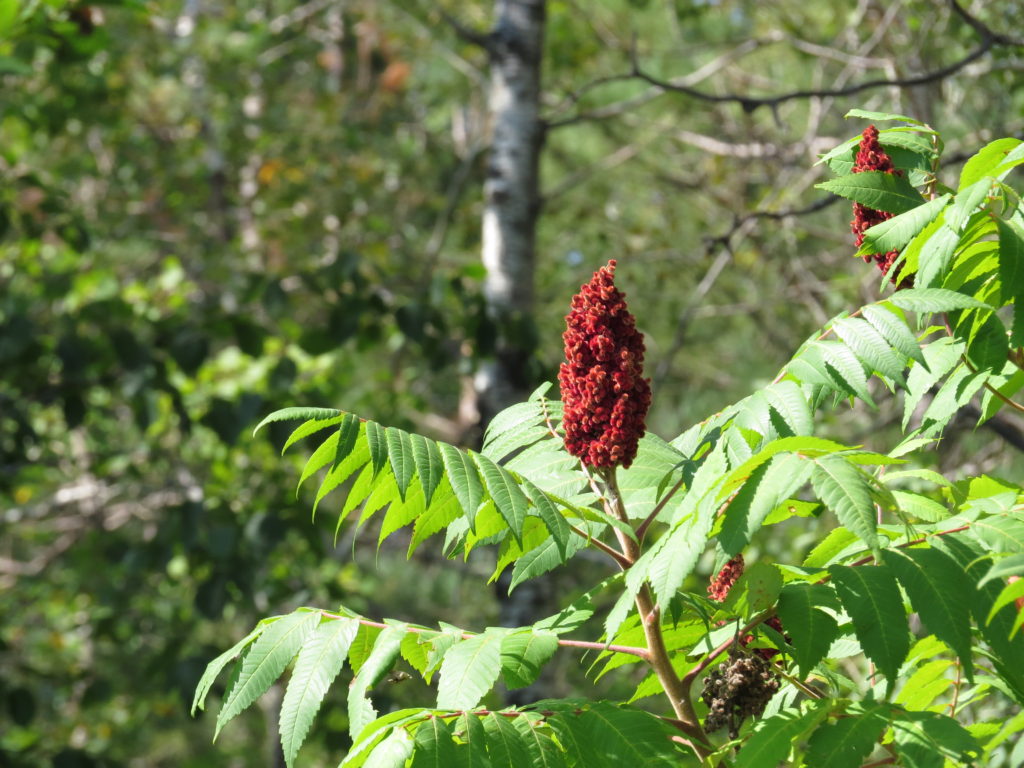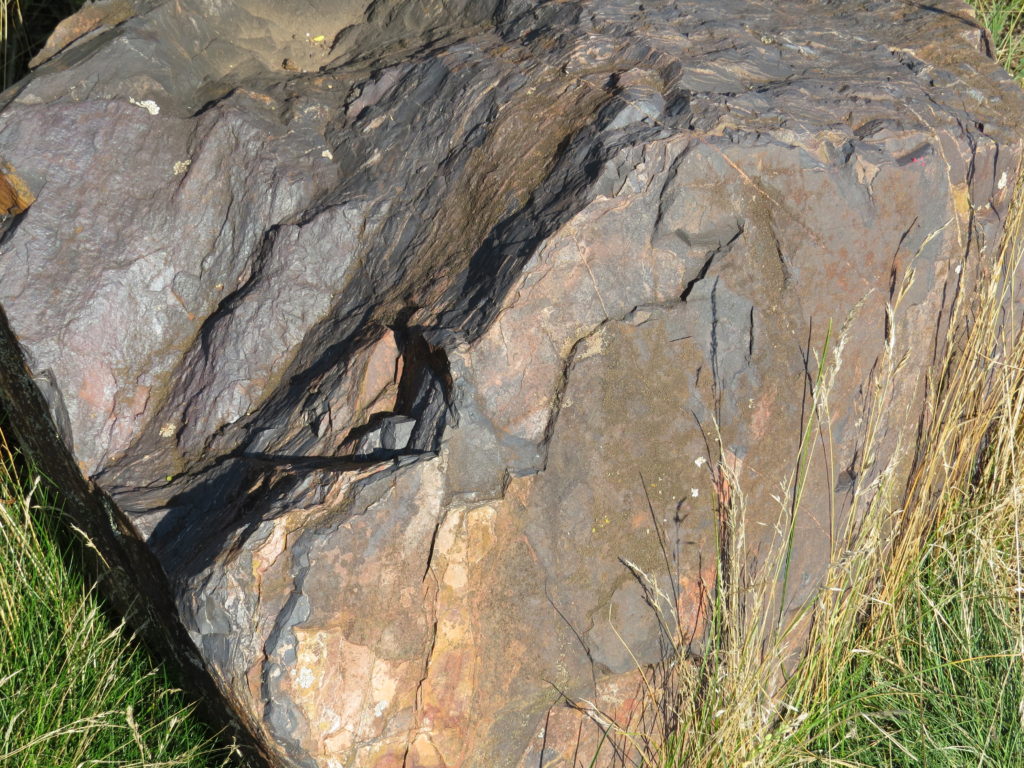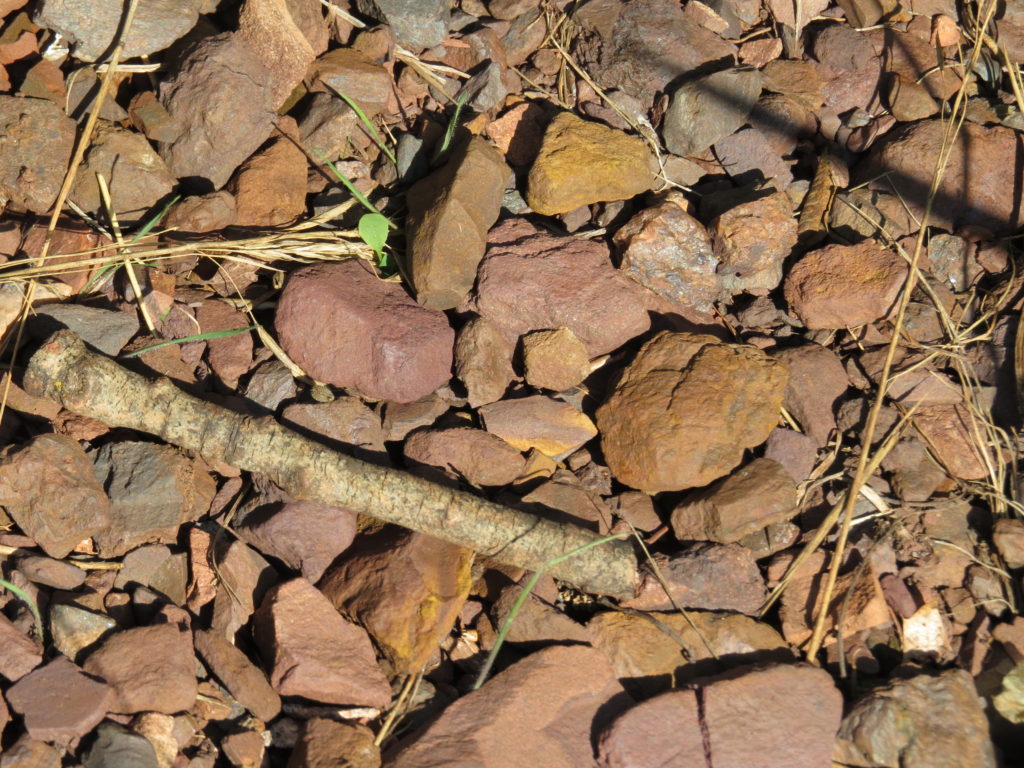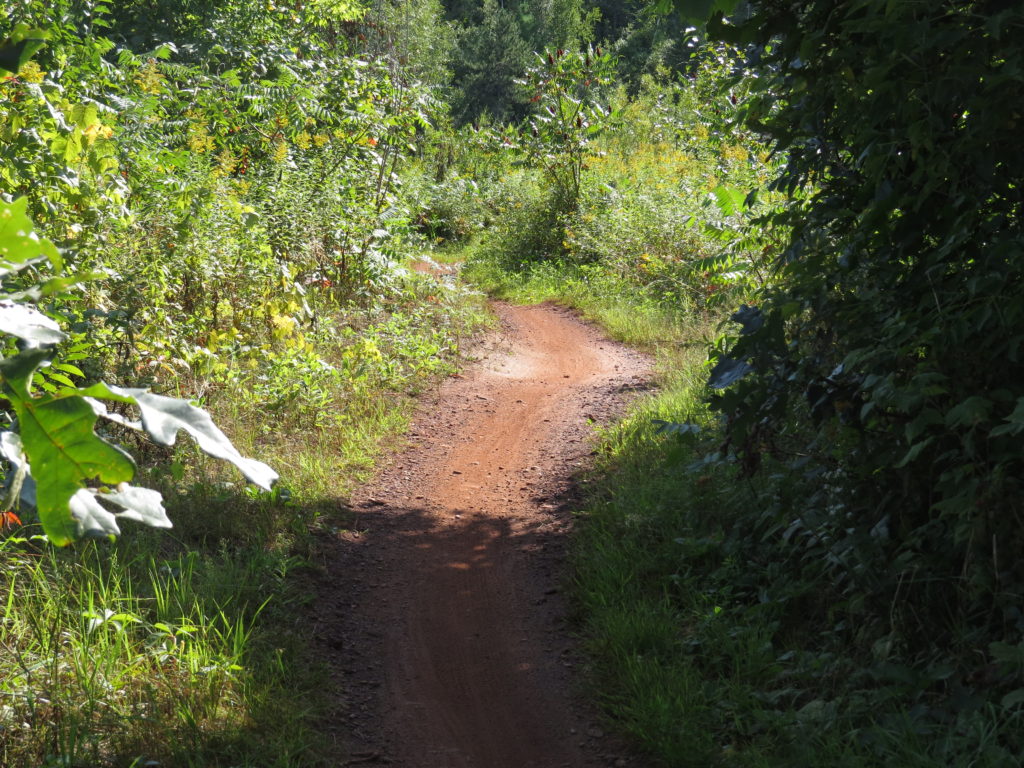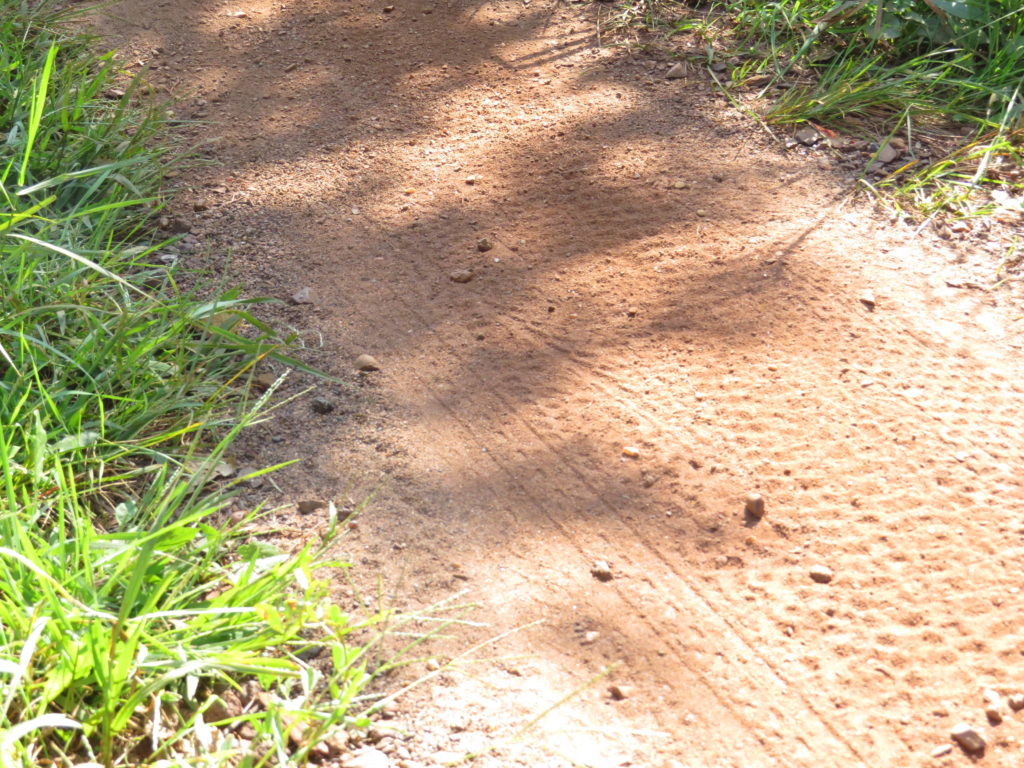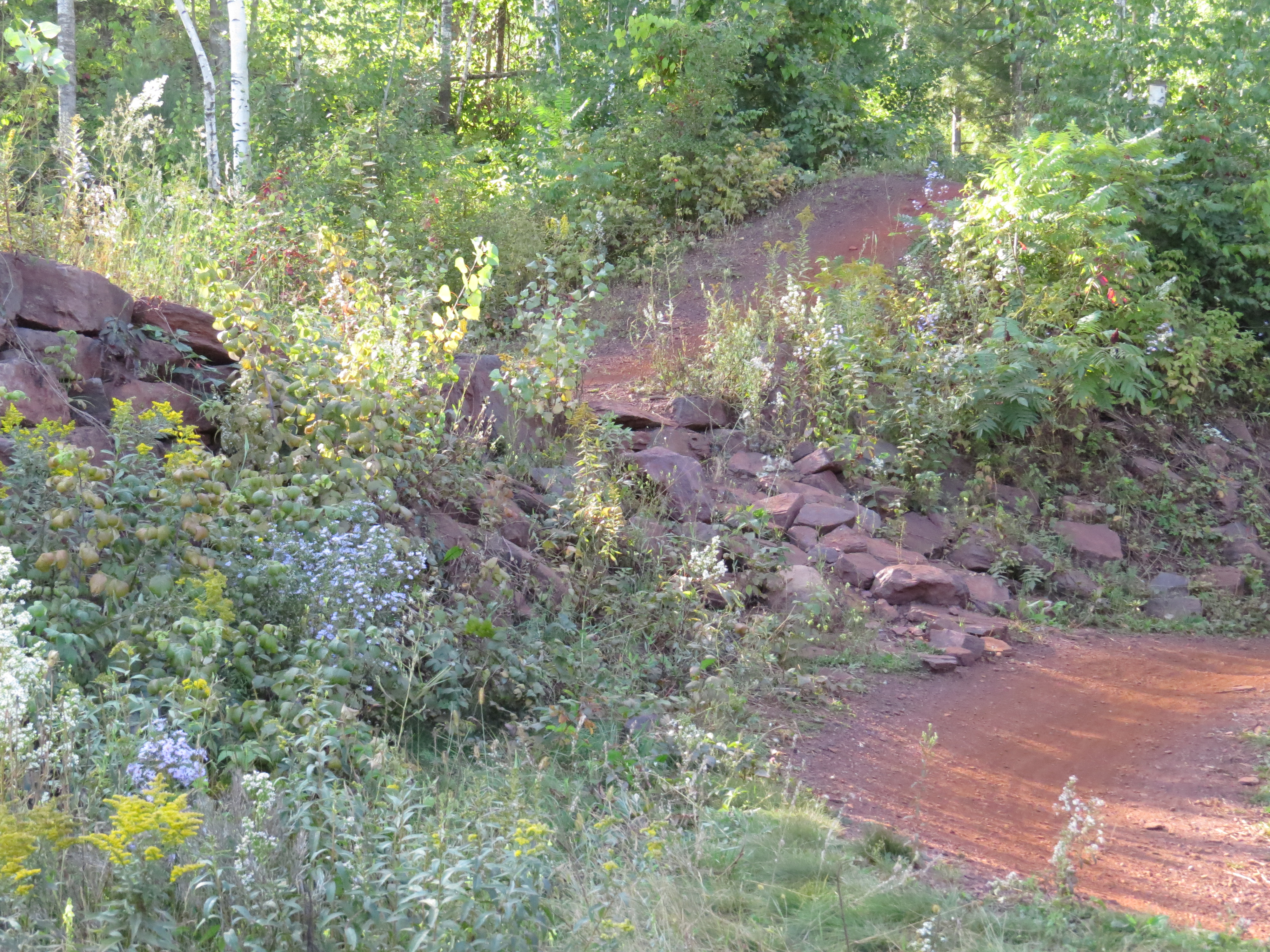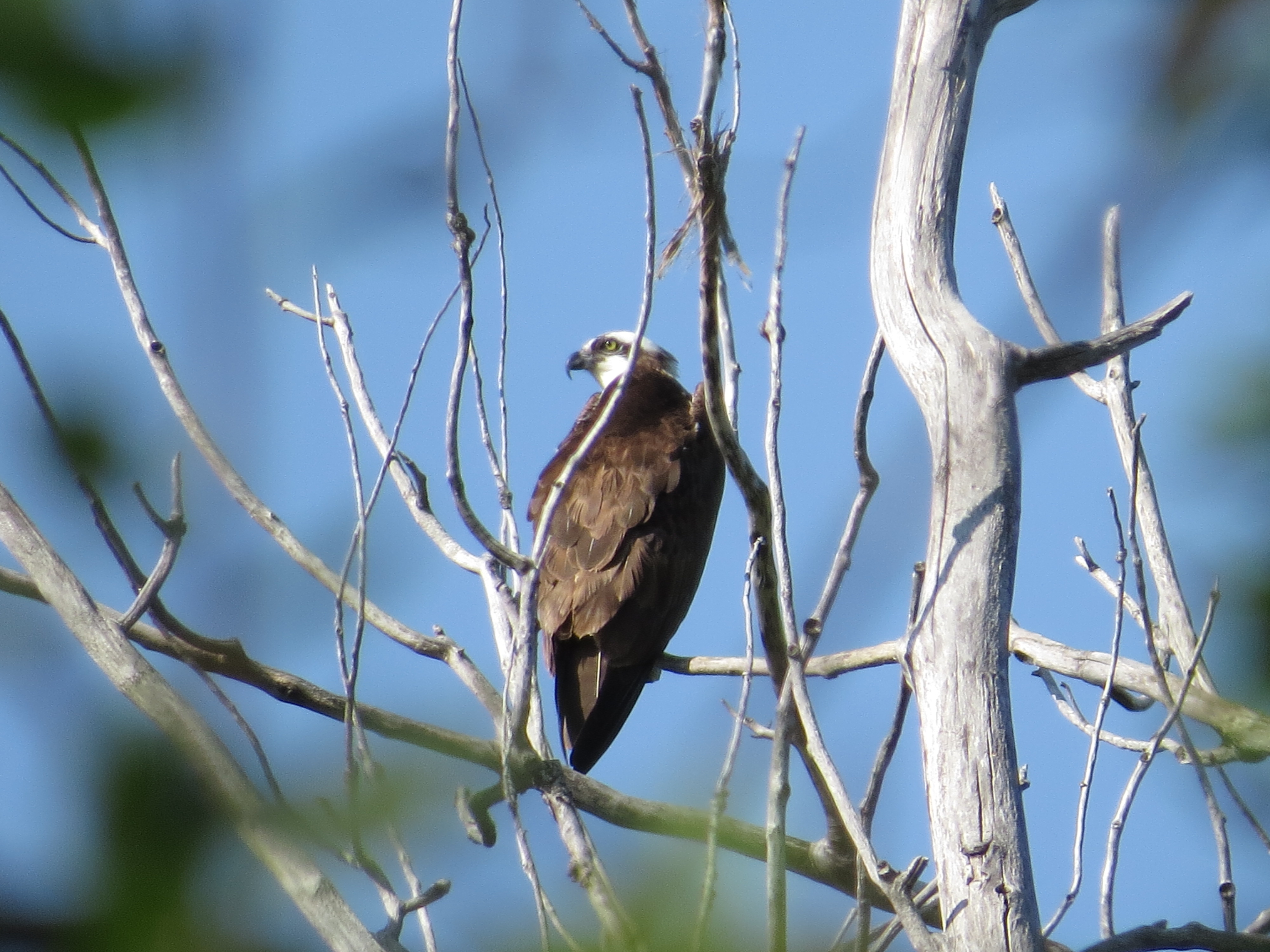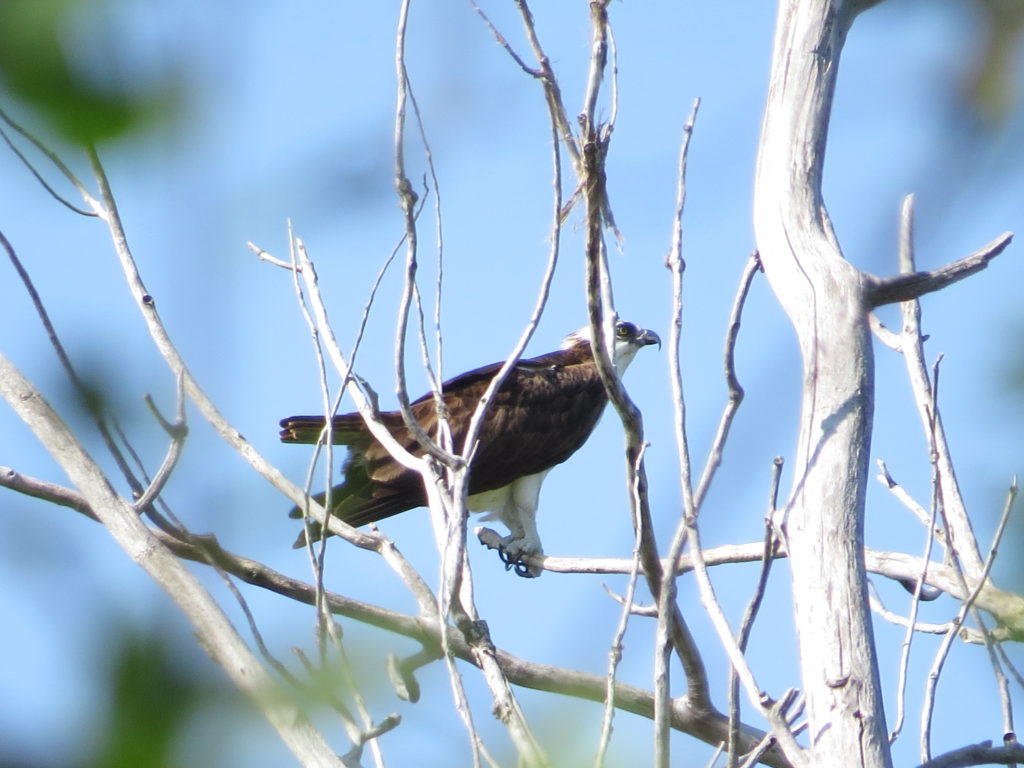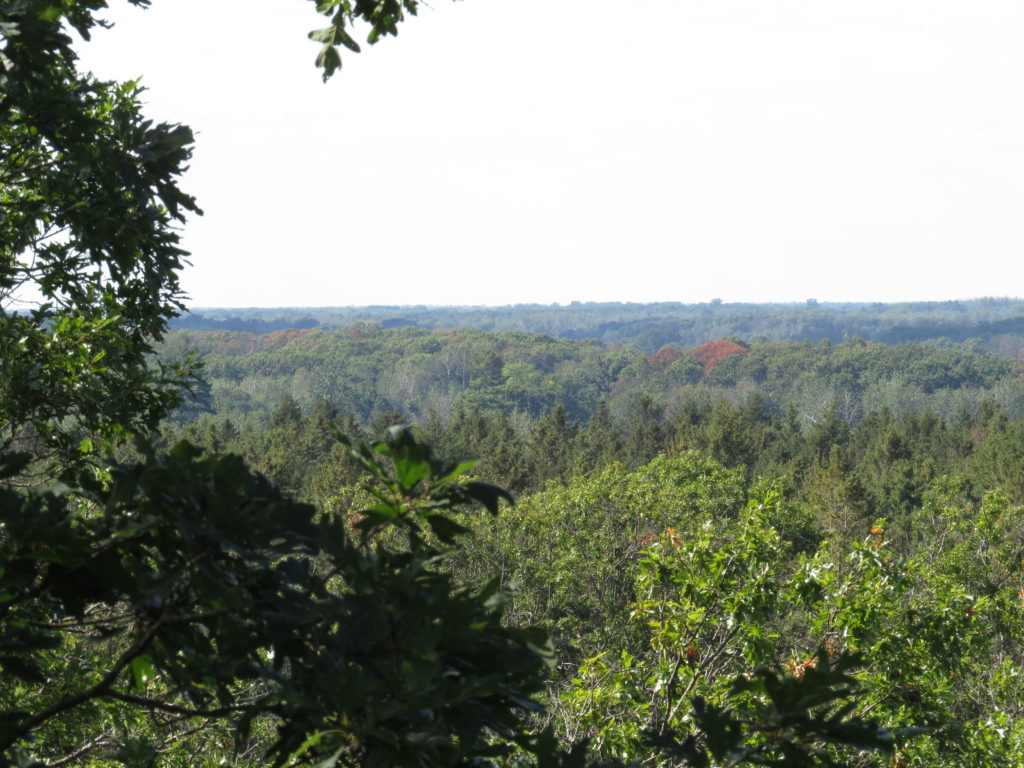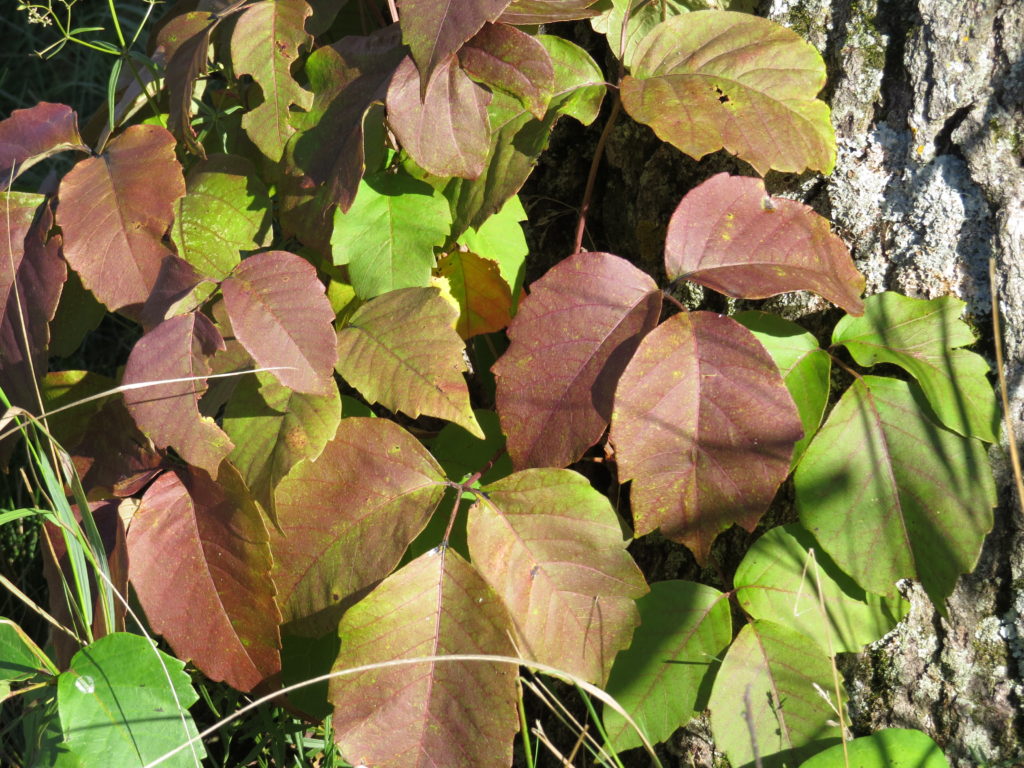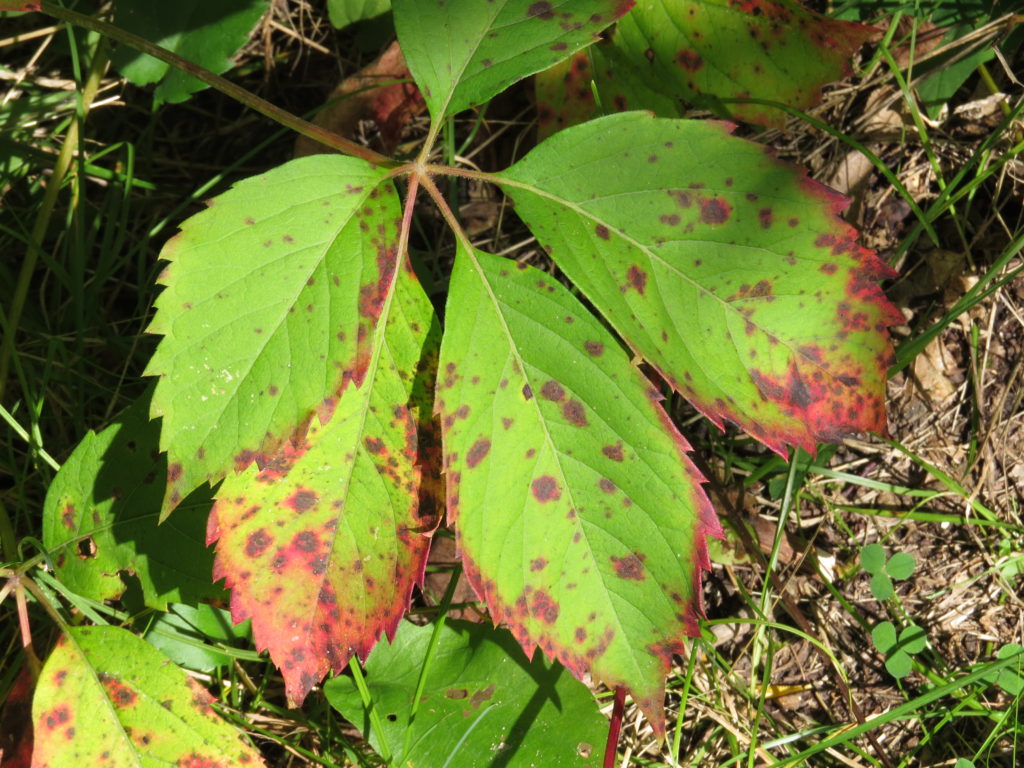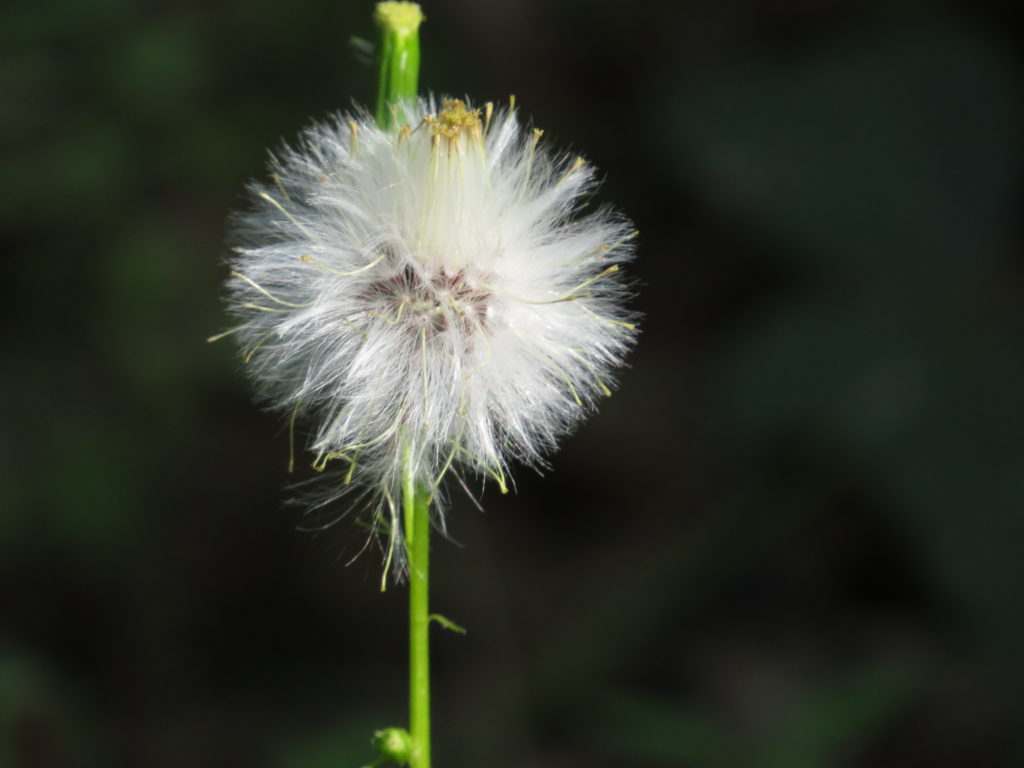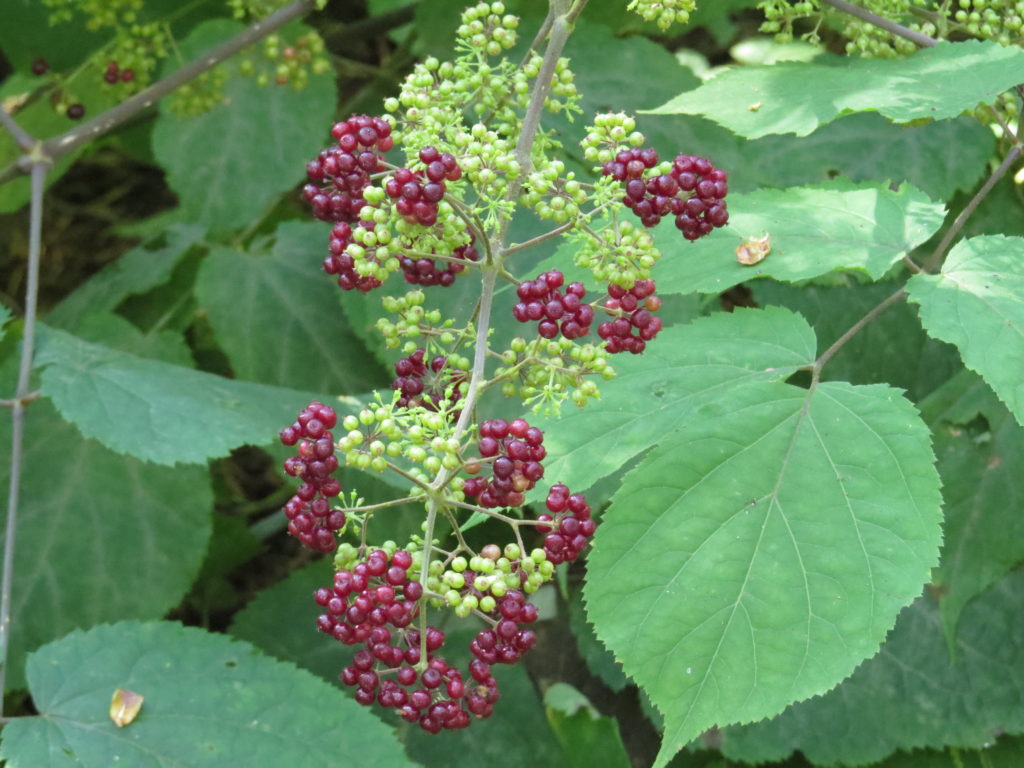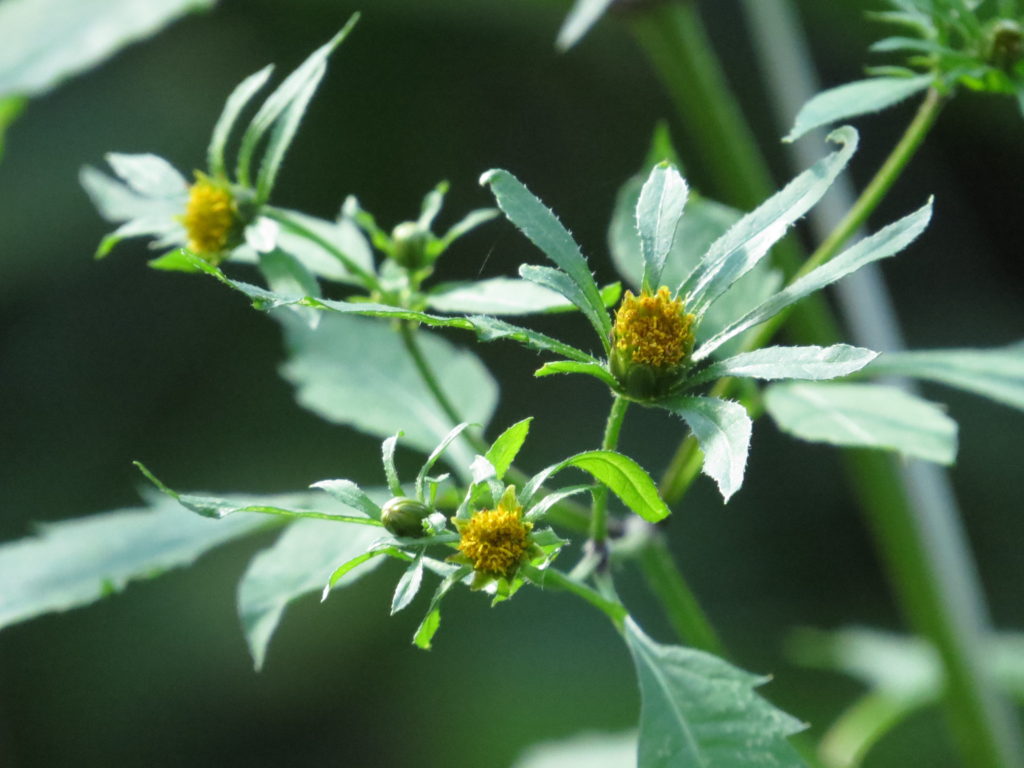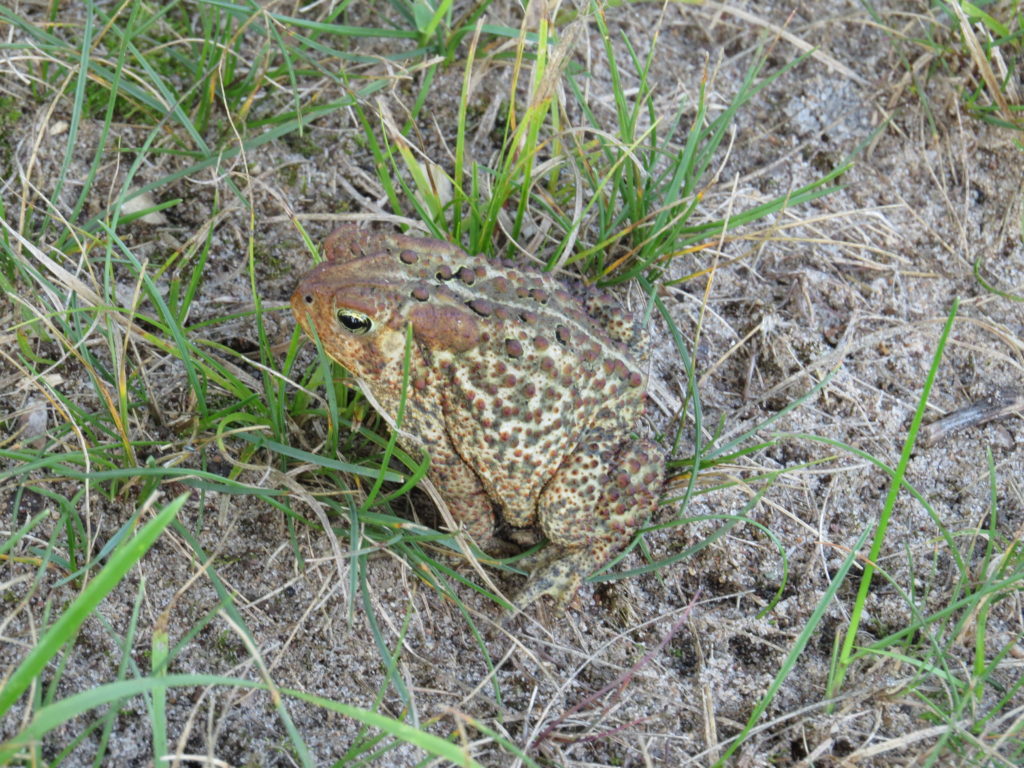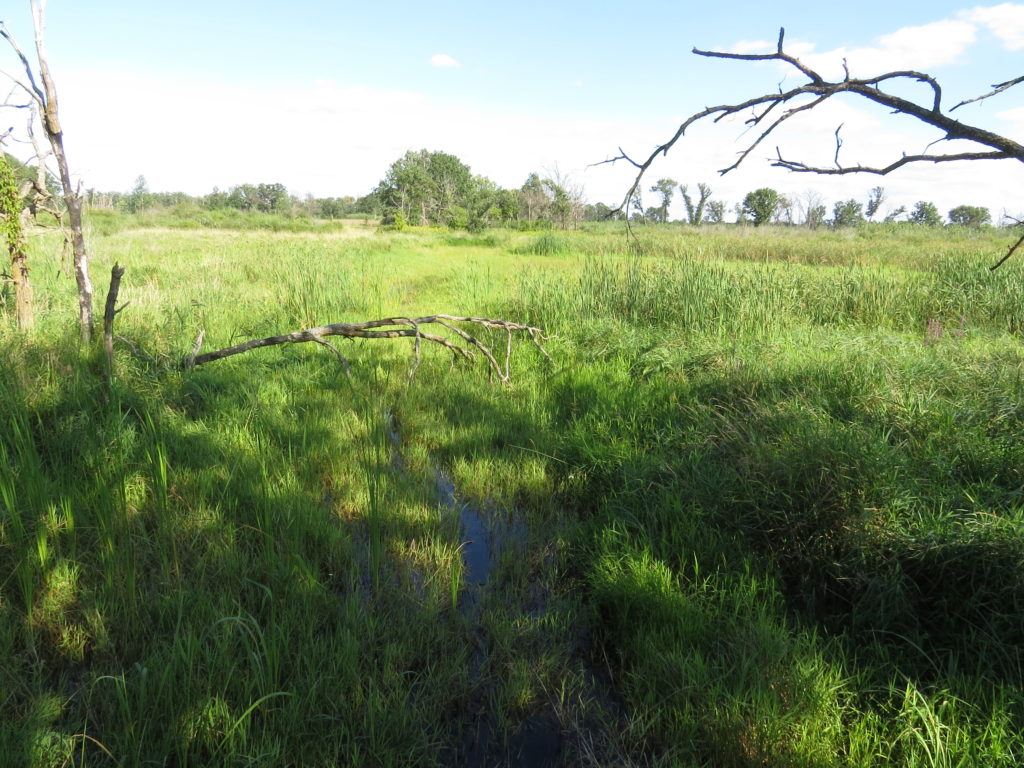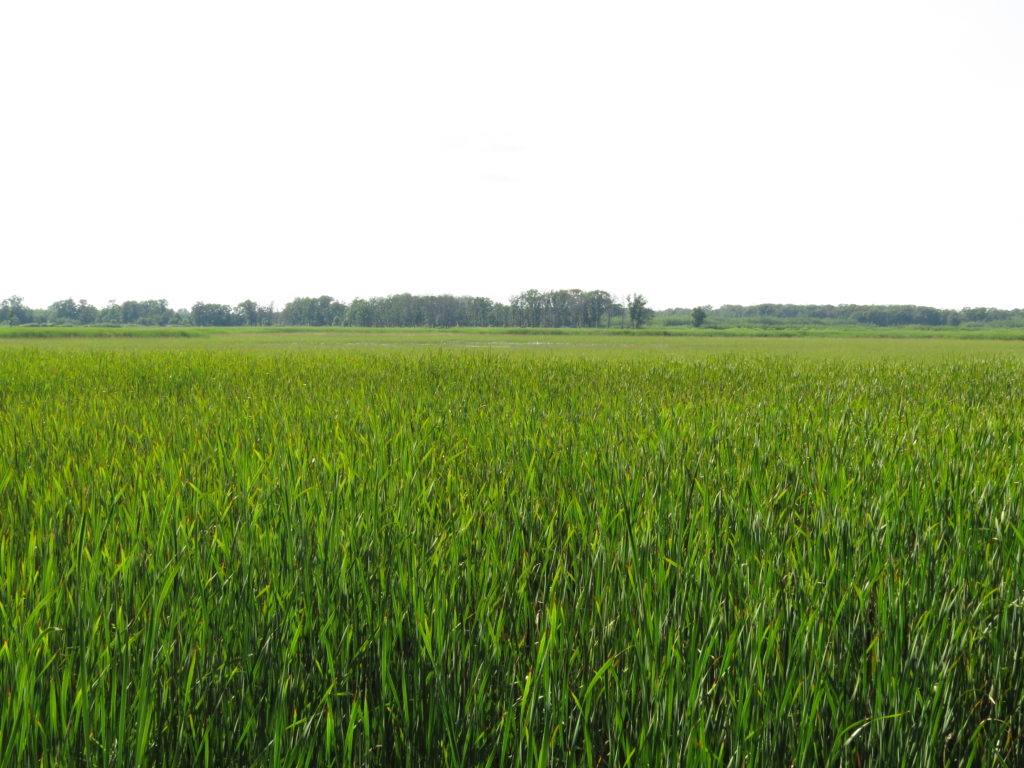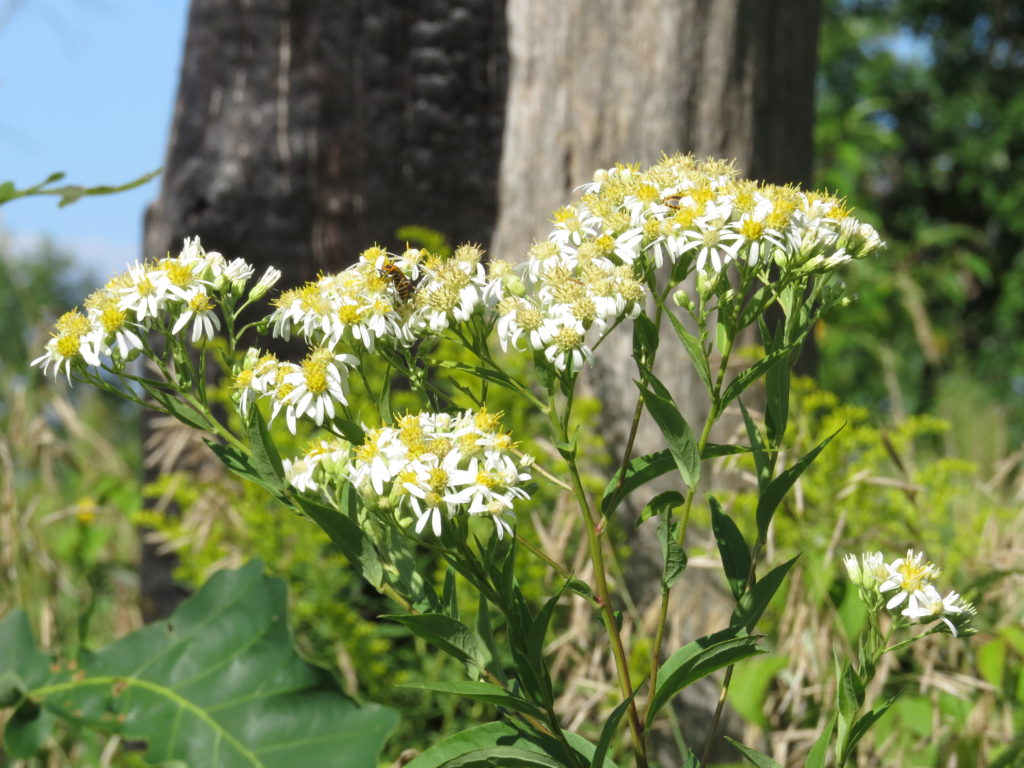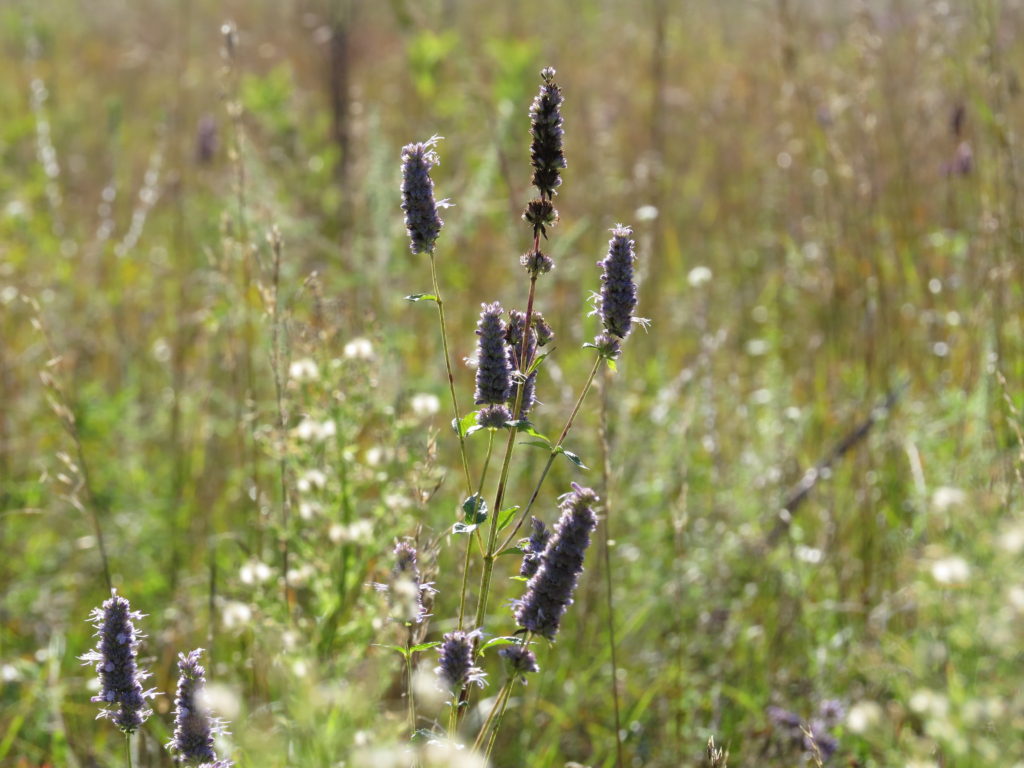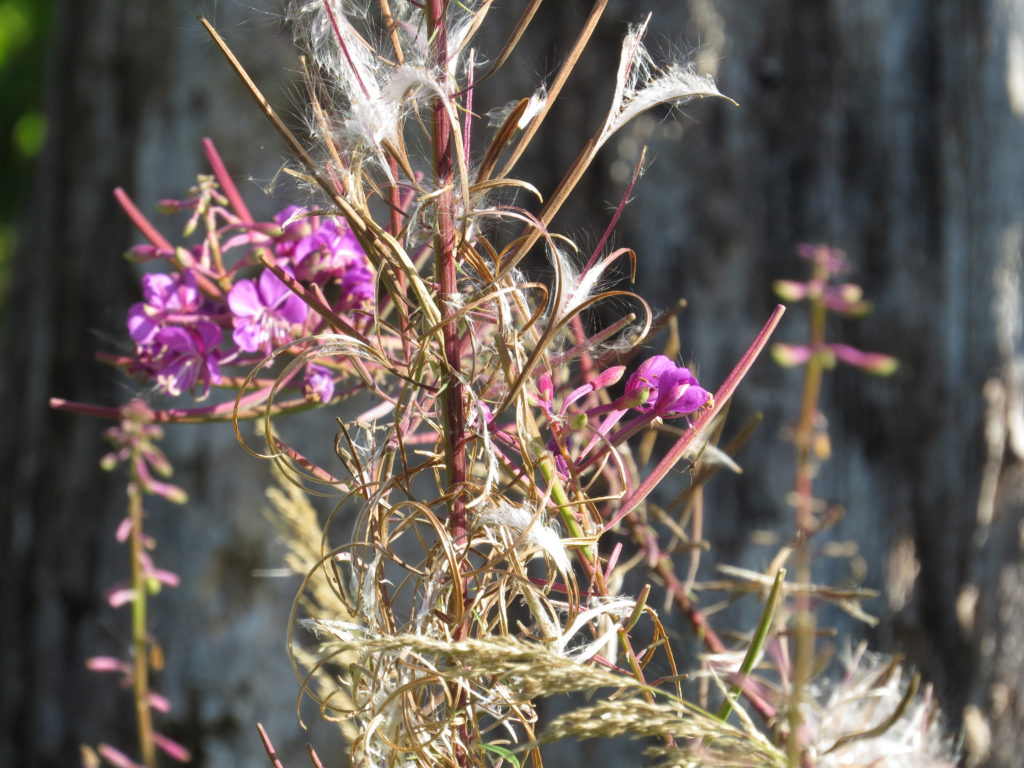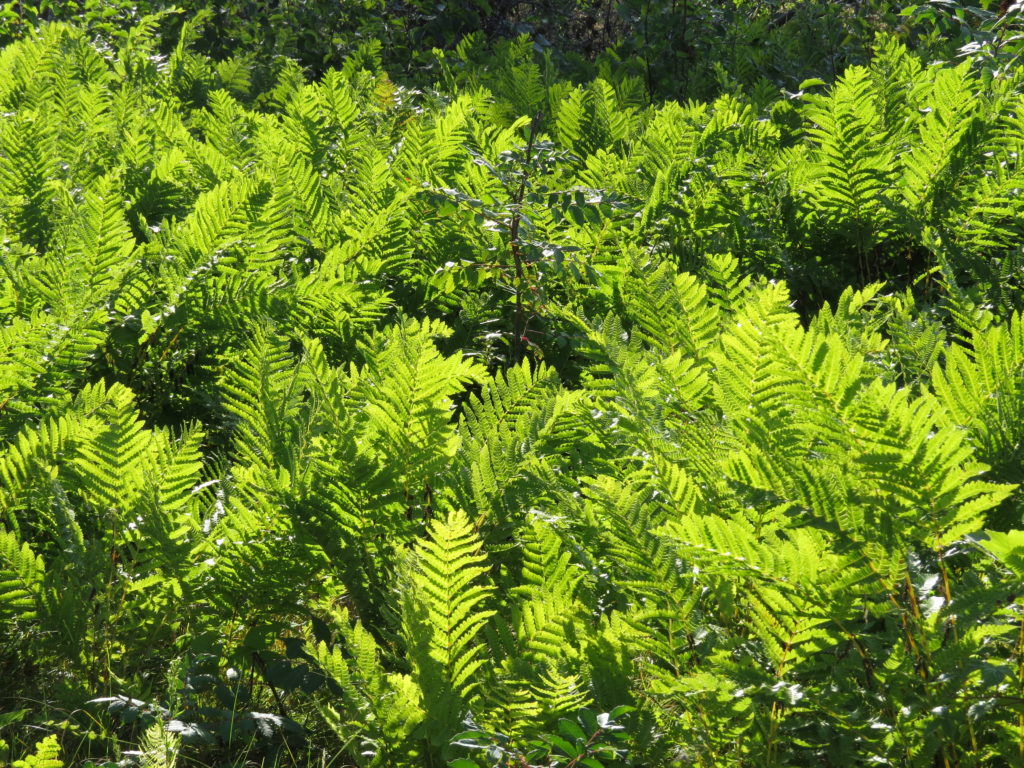I’m not a betting person. I like a sure thing, not the maybe–potential–good day–bad day–luck–fate thing that seems to juice the adrenaline of gamblers on any kind of betting opportunity. Too much drama for me. That’s why I love the changing of the seasons—it’s a sure thing. And yet, there are humans who want to make even that a little more dramatic! When will the leaves be at peak color? Don’t miss your chance to go North to the place where the Fall color will be the most spectacular at this particular time! We even want to game Mother Nature. (I guess that’s nothing new.) Don’t get me wrong—I love the spectacular colors of Autumn leaves at peak times. It really is the epitome of storybook Autumn, especially when paired with pumpkins, hot cider, fingerless gloves, red cheeks, cozy sweaters, and Uggs. But I also love the process of Fall—the subtle shift when plants stop growing and pour all their energy into the production of fruits and seeds, when there is ripening and fullness and deep color to the produce, when waning energy production is noted in the loss of gloss or slight color change in leaves, and when a morning temperature in the low 40’s produces a heavy coat of dew on the warm, sun-soaked earth of the previous day.
Thursday was officially the first day of Autumn, but signs of the process of Fall have been showing for weeks now. Last Sunday Chris and I hiked at Oak Savanna Park in Sherburne County. 140 acres of the park were gifted to the County by Bill and Margaret Cox on the outskirts of Becker. There was a hint of coolness in the cloudy air when we began our hike from the parking lot of Sherburne History Center whose signage reminded us of ox-cart trails, Indian land, and settler farmers who tried and often failed at making a living on the sandy soil. In essence, they urged us to go forth on this land with the knowledge of who and what came before us.
At this park, as at the Sherburne National Wildlife Refuge to the south, there are acres and acres of wetlands.

The rolling hills above the wetlands were home to an impressive Oak stand that is being managed as an Oak Savanna as invasive species like Buckthorn are removed.
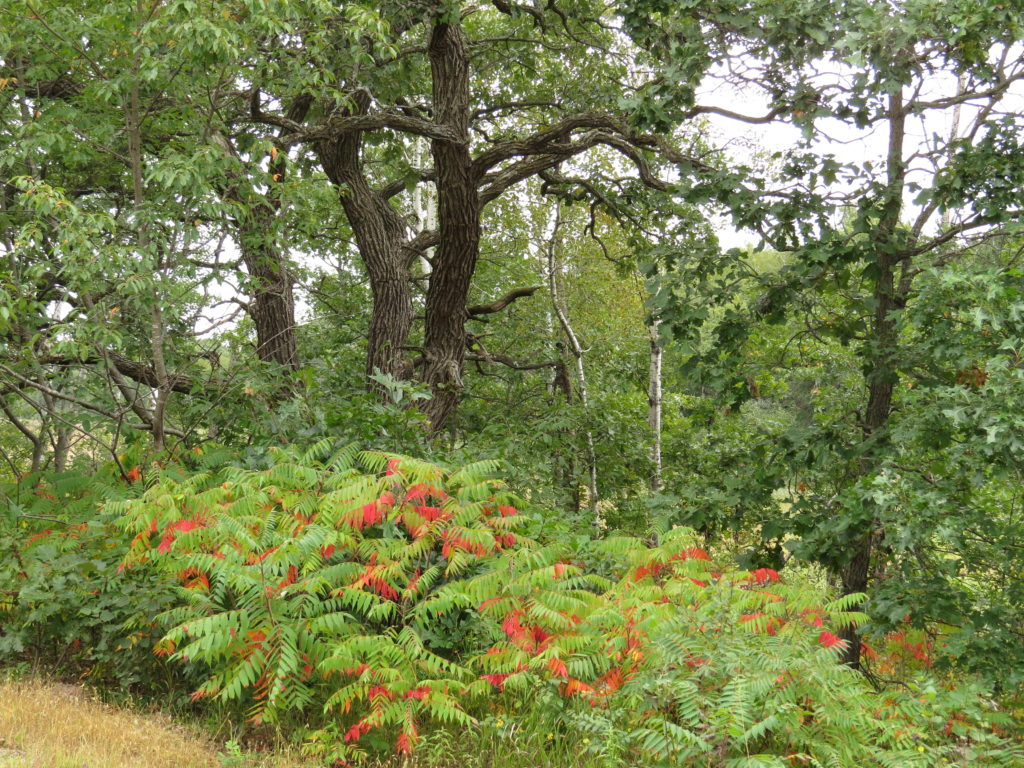
Sumac is one of the first tree/shrubs to display their brilliant Fall colors and even show the process of how the leaves change from the outside tips to the central vein of the compound leaves. Aren’t they beautiful?!
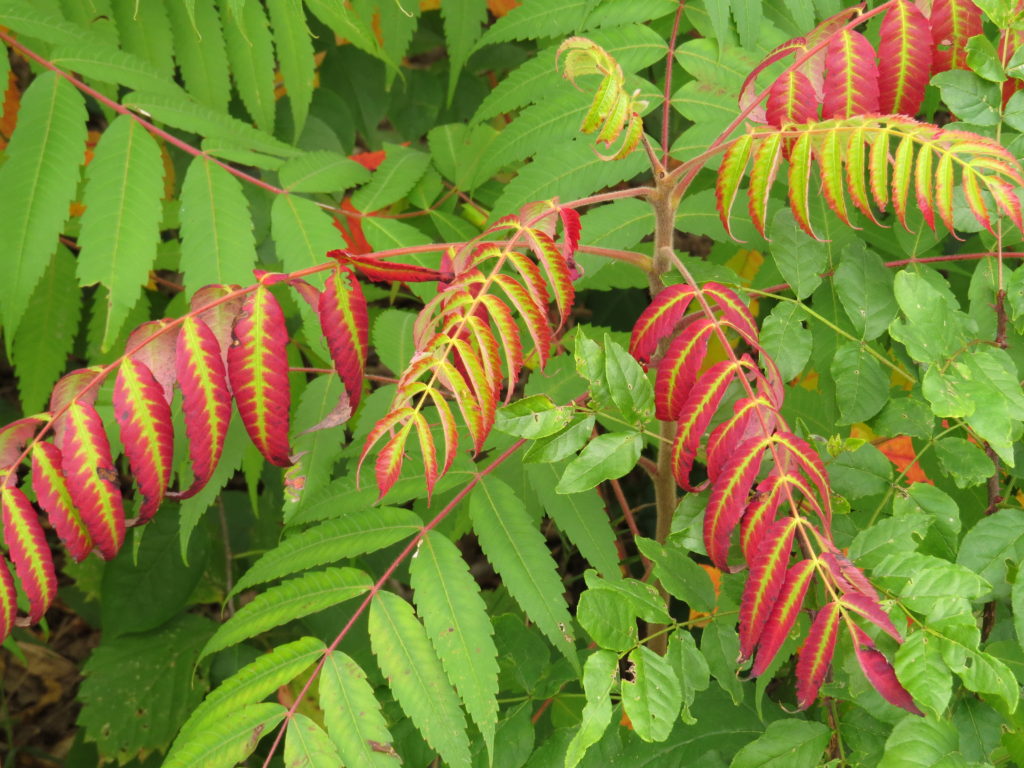
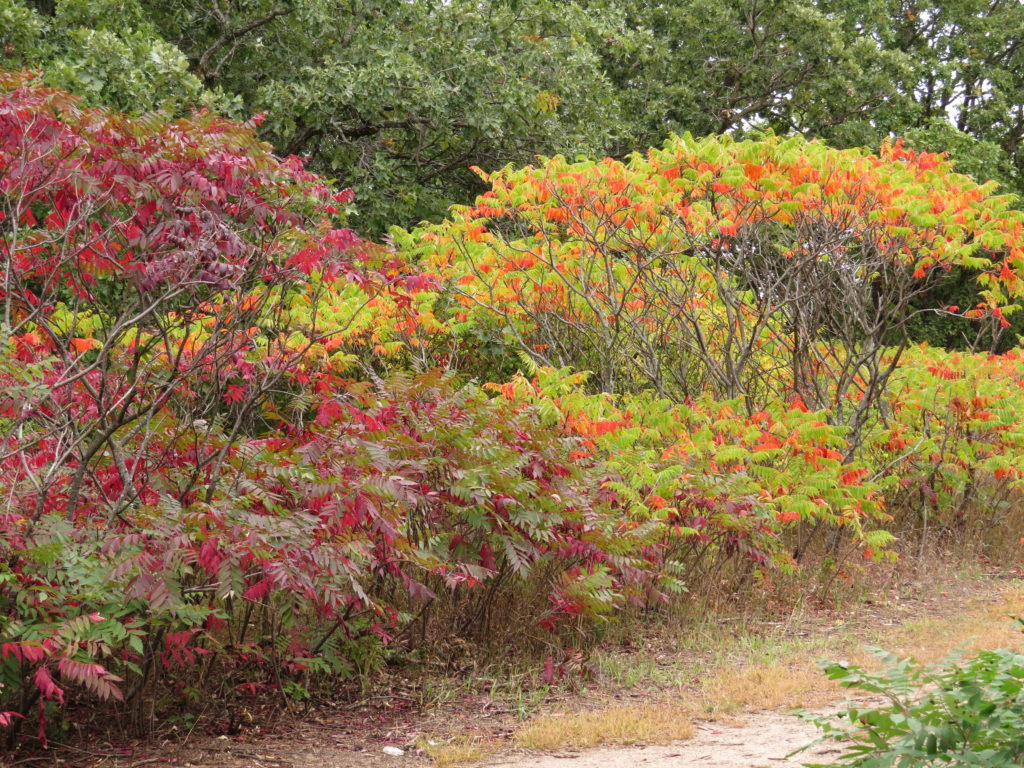
Poison Ivy is coordinating its Fall colors below the Sumac.
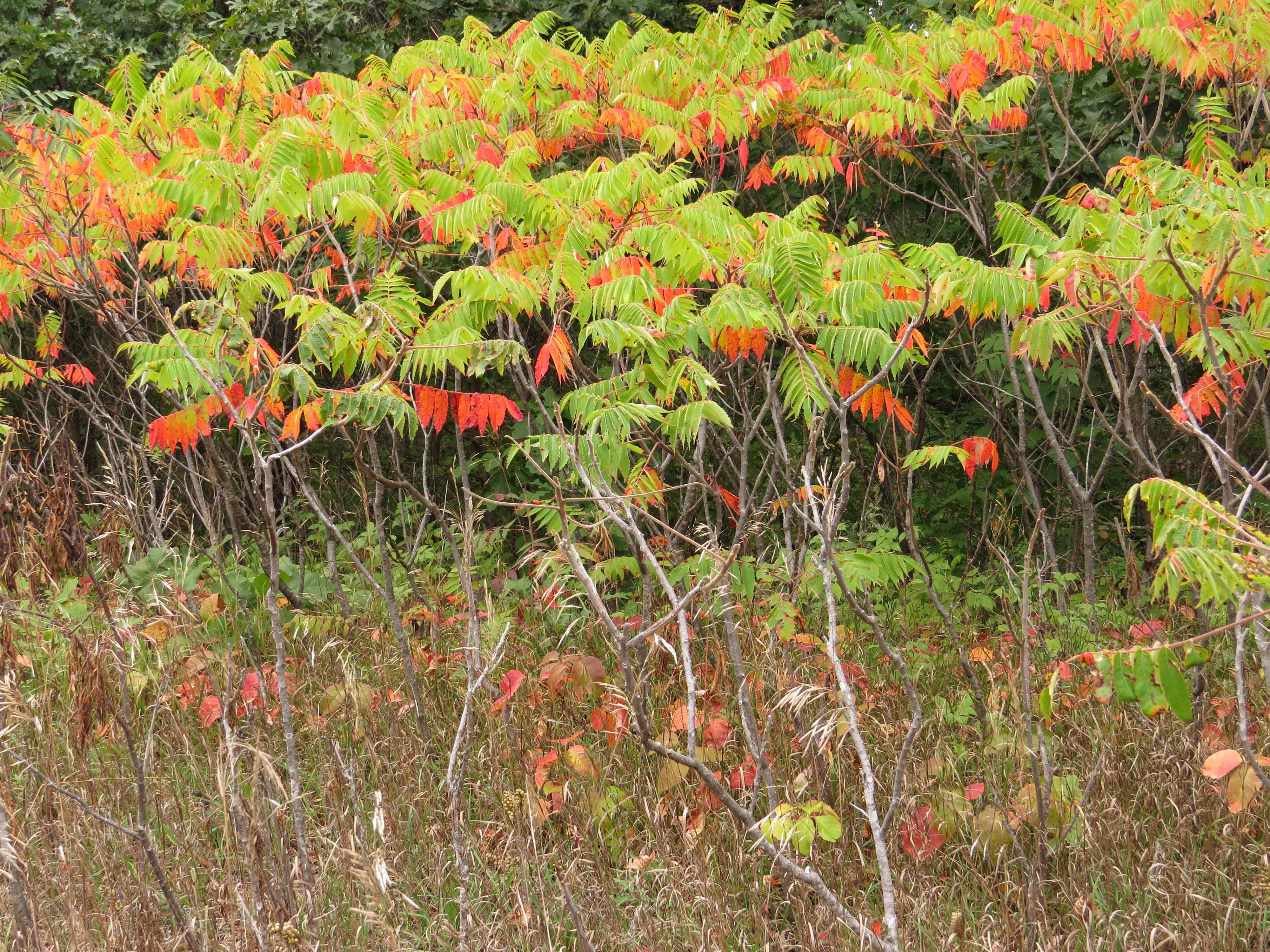
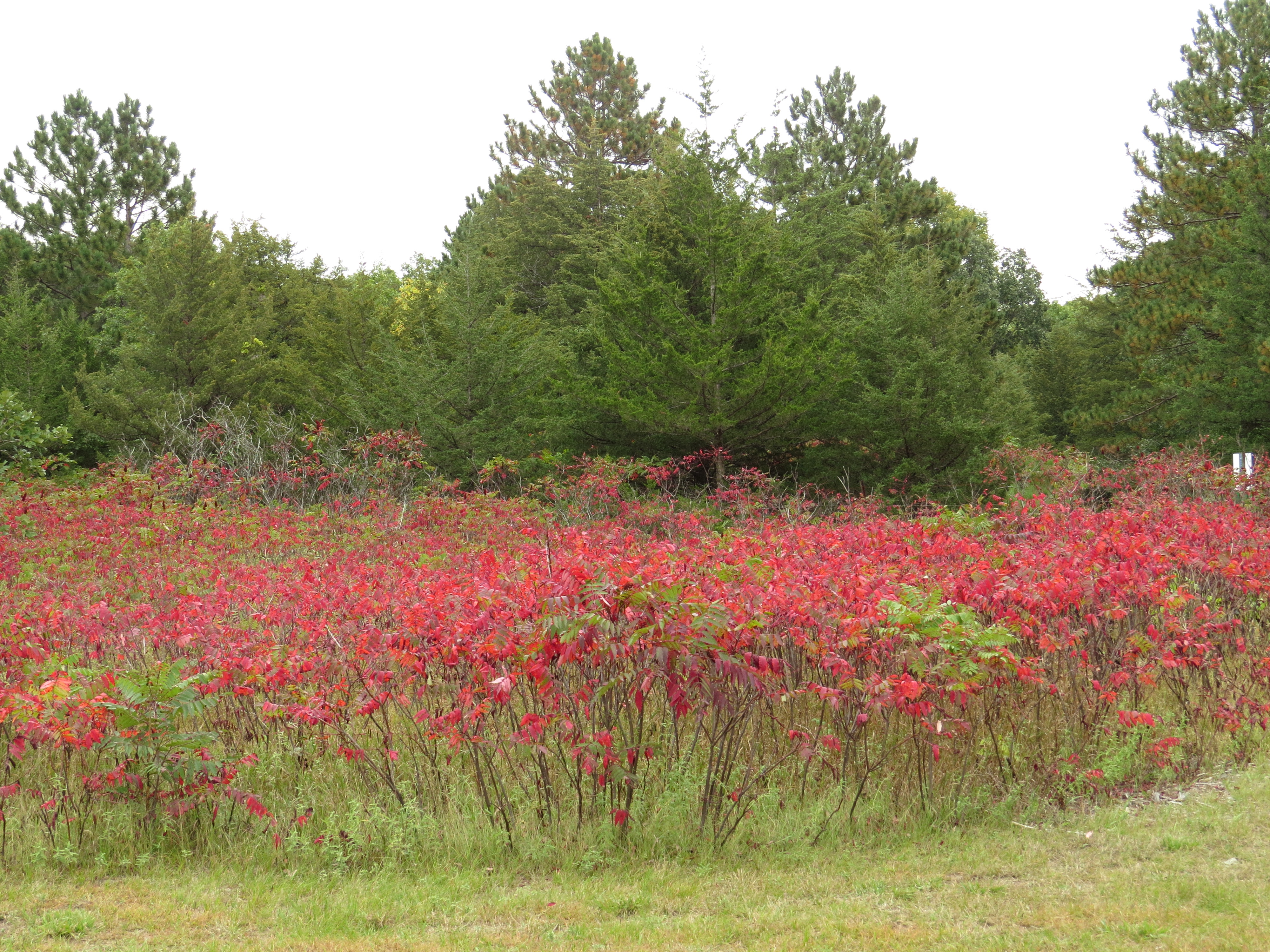
Certain plants are stand-outs at this time of year—purple-stemmed Raspberries with carnival striped leaves, pale purple and albino bracts of Spotted Horse Mint, and the spiny brown balls of Cockleburs.


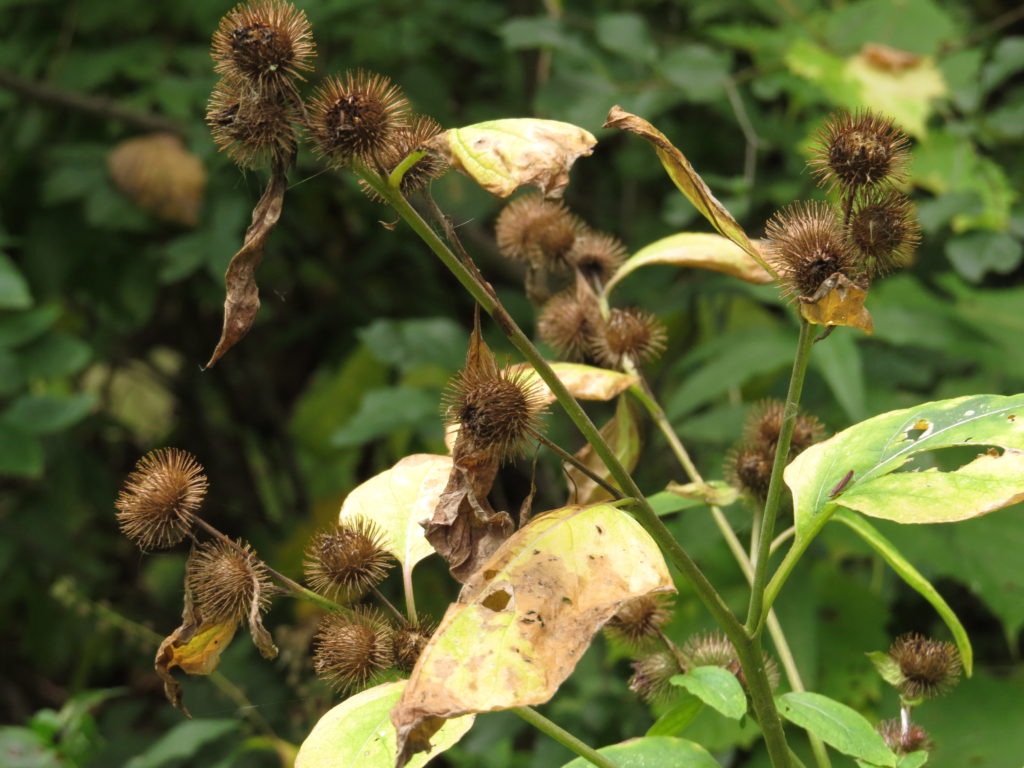
The park has horse trails and an extensive disc golf course, so at times we found ourselves on someone else’s turf.
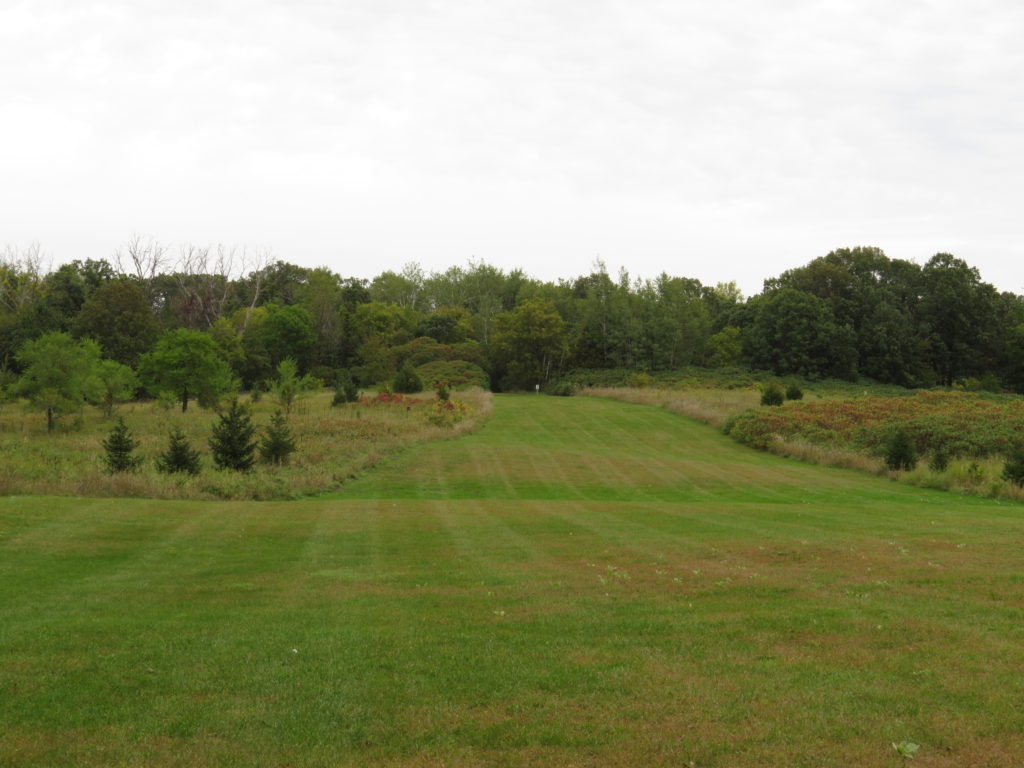
Ash trees are one of the first hardwood trees to change color, and again, the leaves show the Fall process of losing chlorophyll.
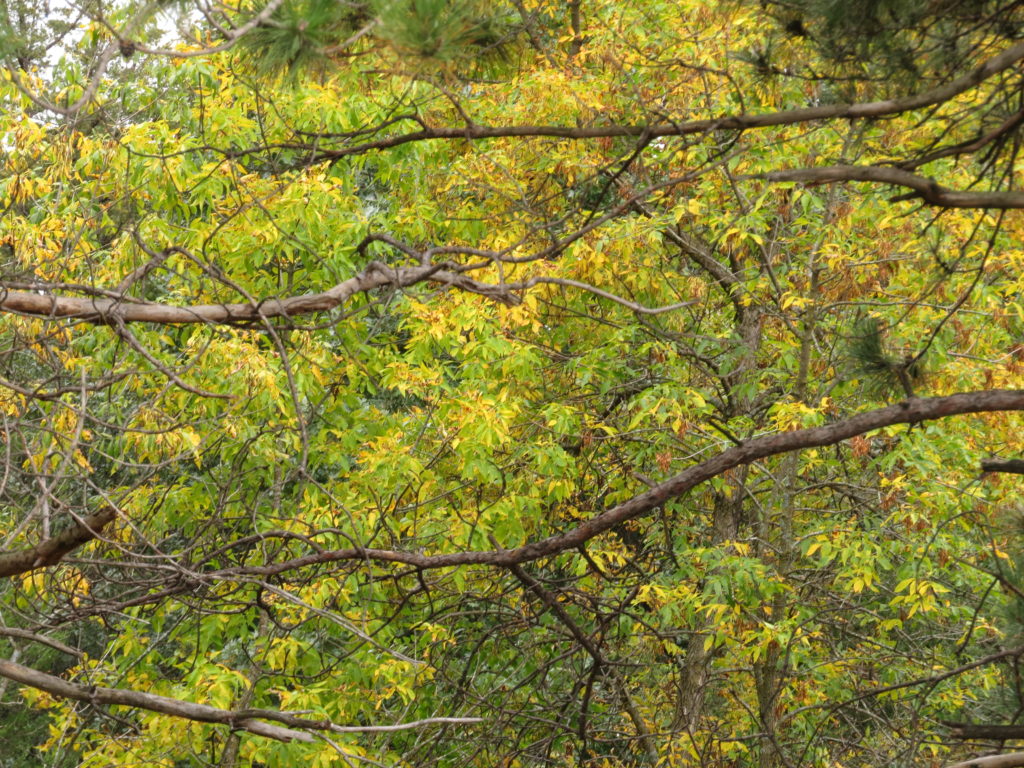
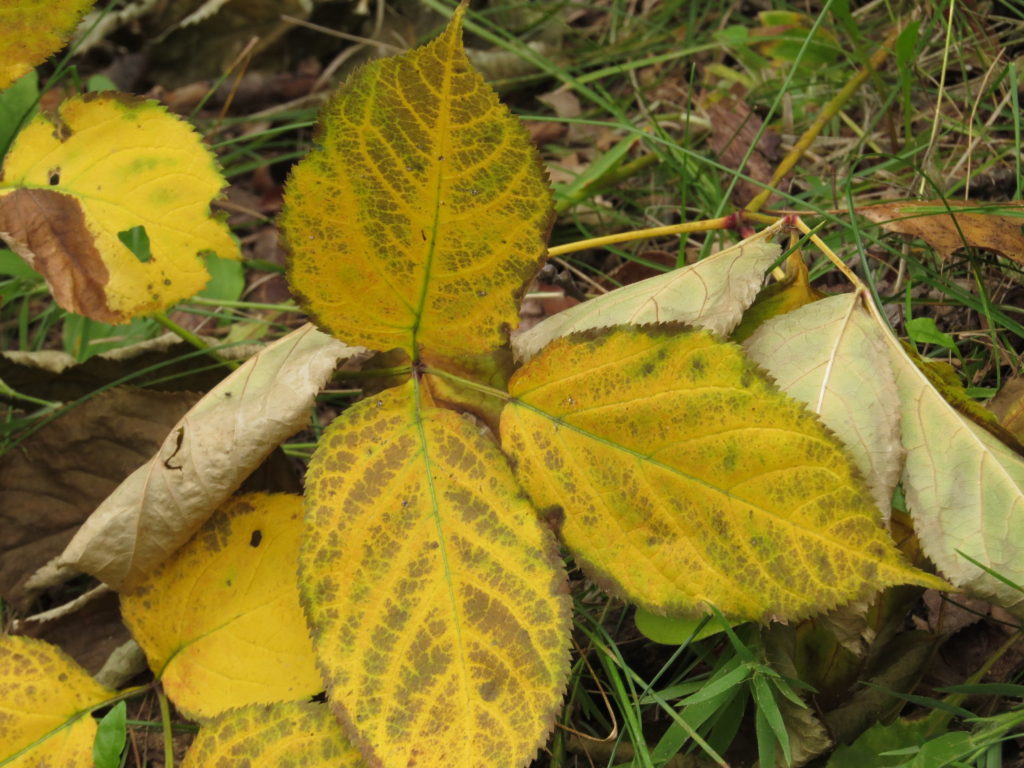
And Gooseberries, one of the first shrubs to open their leaves in the Spring, have turned a rosy color along with the Virginia Creeper growing at their feet.

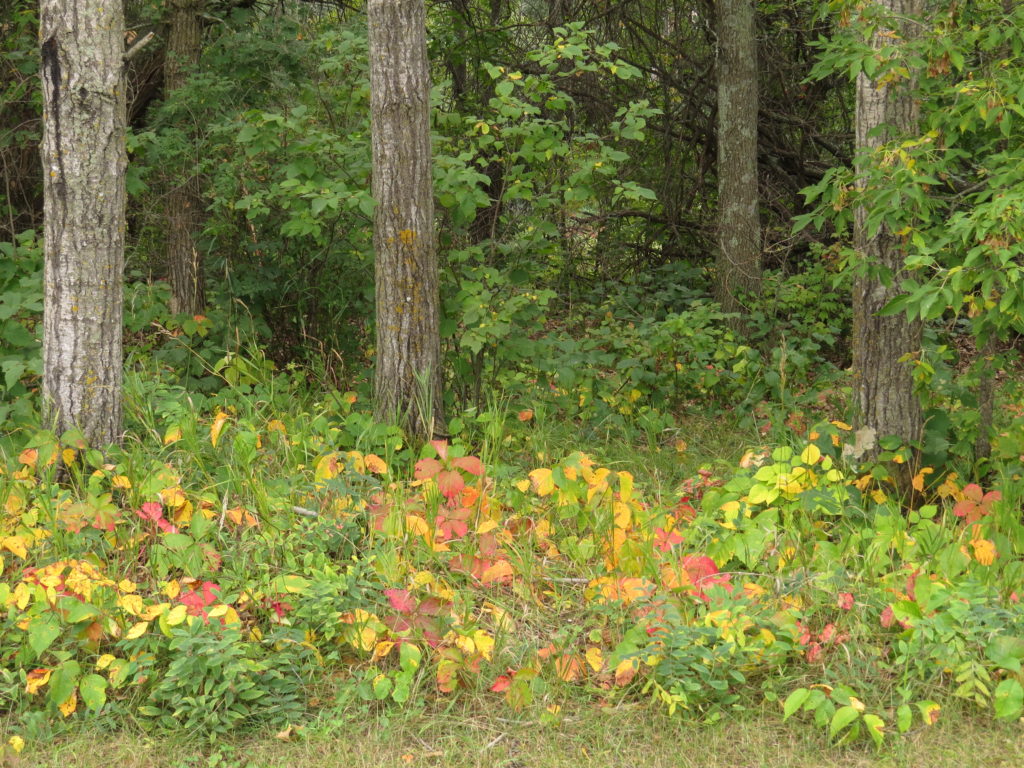
There is a subtleness to Autumn along with the spectacular color. It’s like a sigh after work well done.
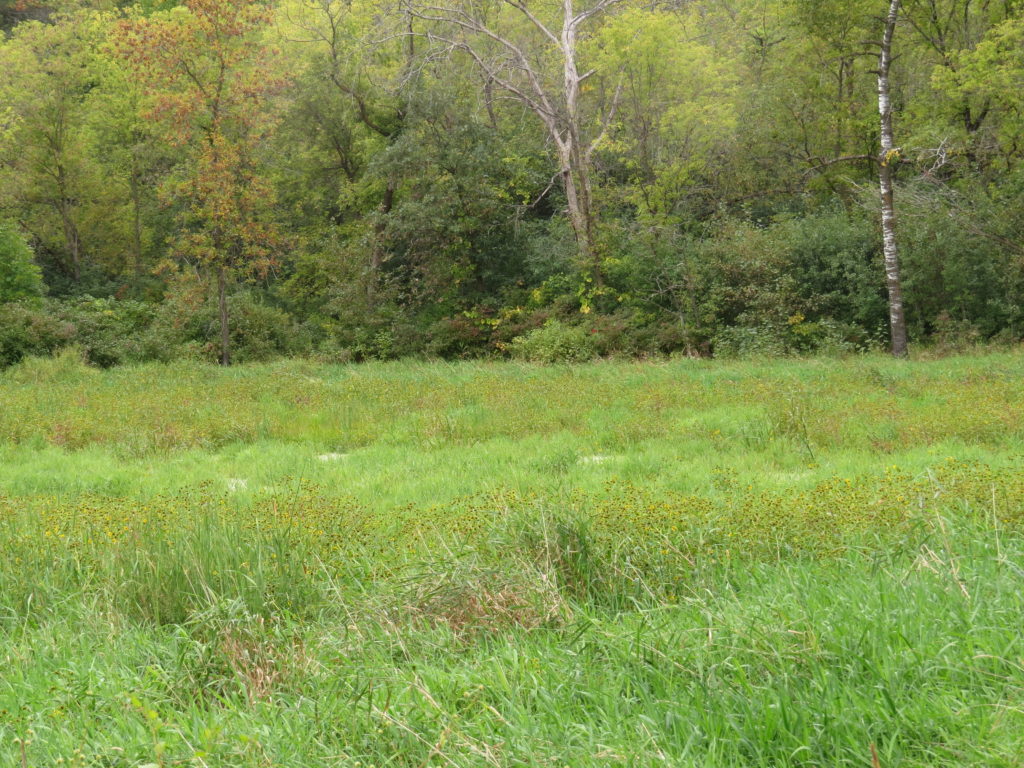
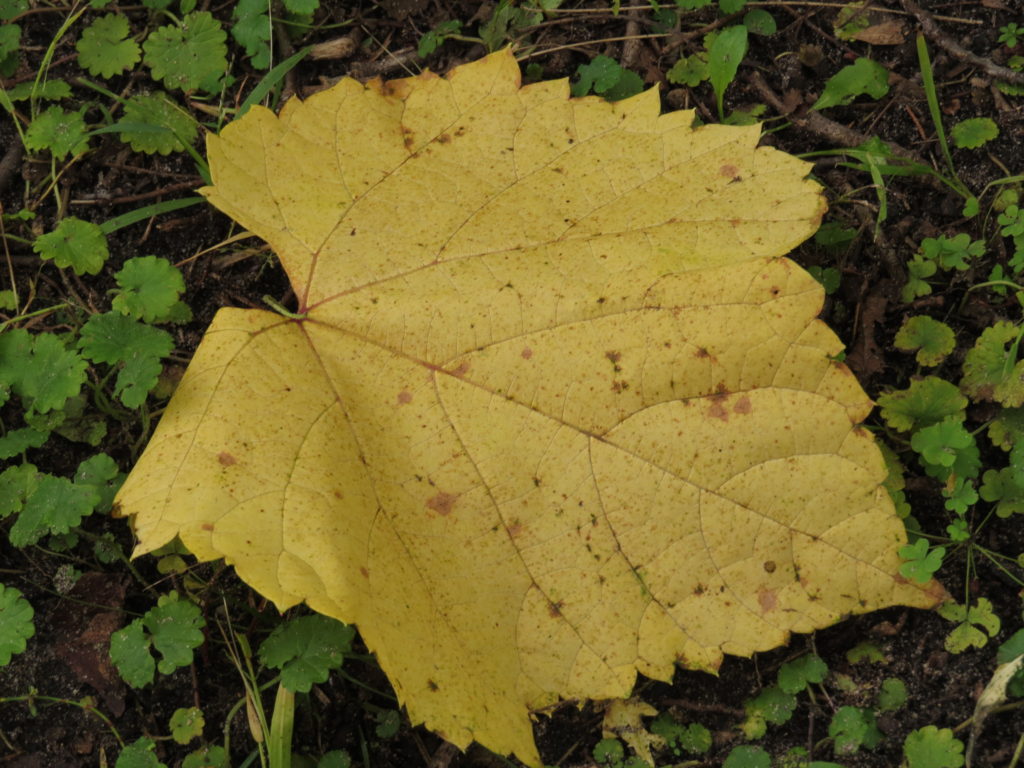
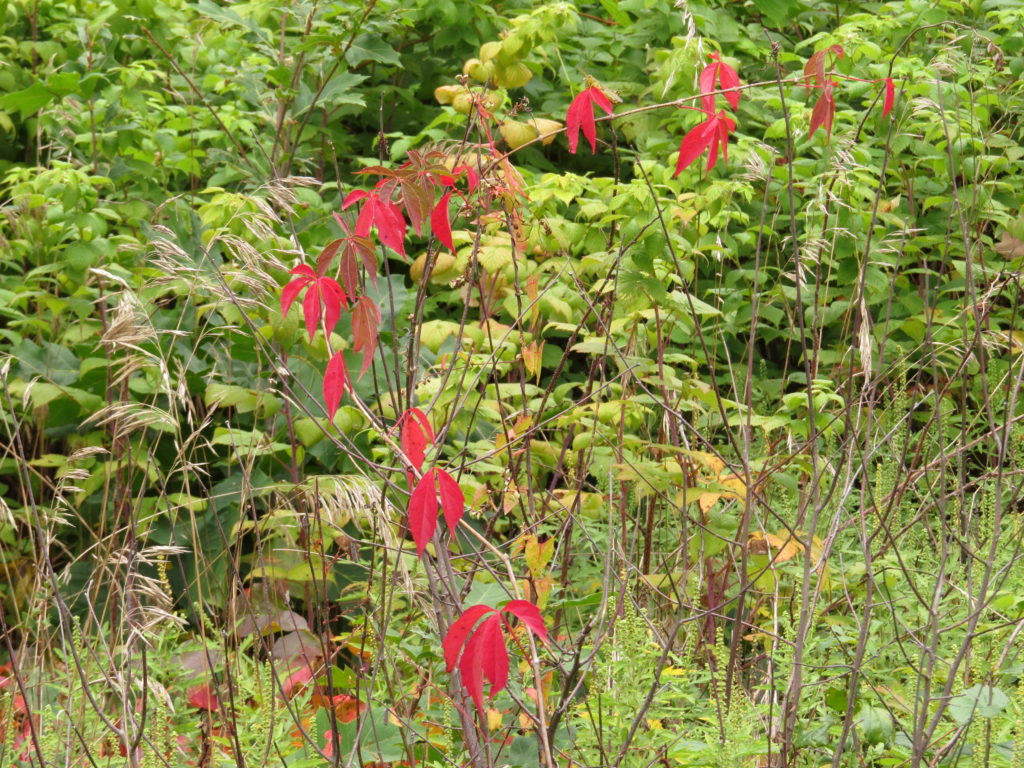
Mother Nature has worked hard all Spring and Summer to grow, reproduce, develop, mature, and produce—the work of all our lives in one way or another. It takes a tremendous amount of energy (thank you photosynthesis and Sun) along with imperative resources like soil nutrients and water in order to get to the point of ‘work well done.’ Sigh…
I think we have a tendency to want the ‘good stuff’ right away—the spectacular peak colors, a great paying job as we start our career, a well-furnished ‘dream’ home—the epitome of American life. But when we embrace the process, we don’t ‘wish away’ the time it takes to get to the ultimate experience. The proverbial ‘life’s a journey, not a destination’ holds true in Nature and in our lives. If one only lives for the ‘hit’ of peak colors or for the money jackpot, what happens next? The apex experience only lasts for a minute or two, then we strive to reach the next ‘hit.’ There is wisdom and satisfaction in the process—growth and development comes one way or the other, the embraced way or the hard way. We can go forth on our journeys, satisfied with ourselves and what came before us to get us to this moment, enjoy a time of rest, then move forward into a new season of growth, development, and production. Enjoy the process!
